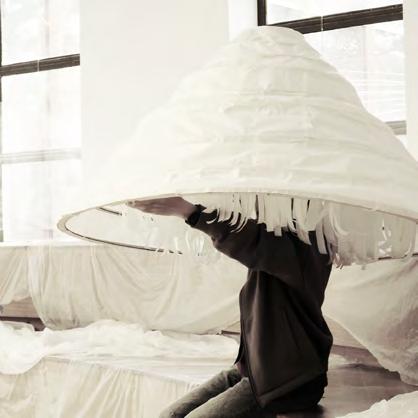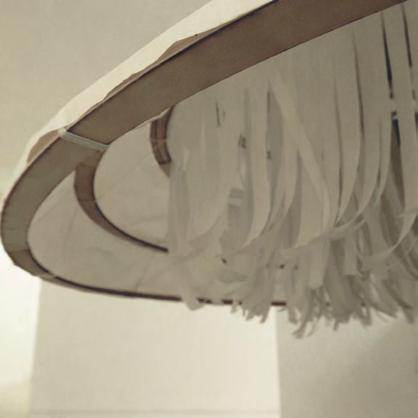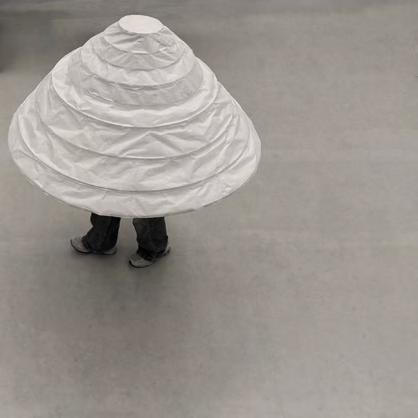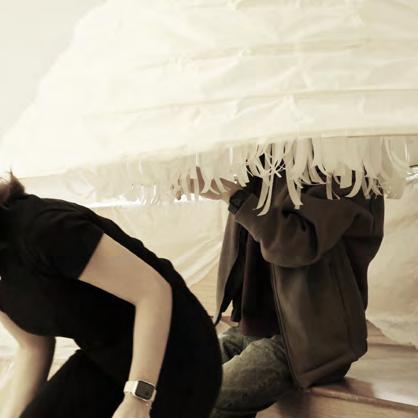Co-EXIST-ence
SELECTED PROJECTS 2021-2024 William Yiming Liu
CONTENTS
"CO-EXSIT” has its origins in the Latin words "con-" (together) and "vivere" (to live), which form the Latin word "coexistere", meaning "to exist together" or "to be together". It first appeared in Latin during the Middle Ages and was later introduced into English and many other languages. The topic of coexistence has always been a natural phenomenon, whether or not human beings have appeared.
In the West, the Western philosopher Aristotle saw the establishment of a POLIS as the embodiment of coexistence, and Kant proposed universal law and human dignity as the realization of rational and free coexistence. In the East, although the word coexistence does not appear in ancient texts, harmony, mediocrity, and Golden Mean are manifestations of coexistence in Eastern philosophy.
Today, we still need to discuss coexistence. It is a topic that goes hand in hand with existence, individual existence and collective coexistence, and instead of death being the only means of recognizing existence, understanding coexistence would seem to break that only.

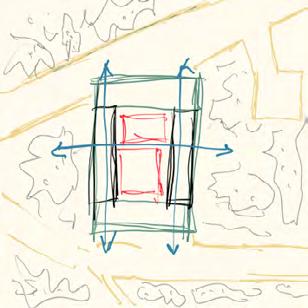
Infrastructure as an Architecture 002
atmosphere: interactive natural performance Fall 2024 | Graduate year 1 Studio
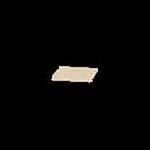
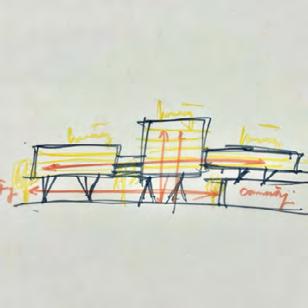
CONDENSING LIVING 023 are you gonna work out with me? Spring 2022 | Sophomore Studio

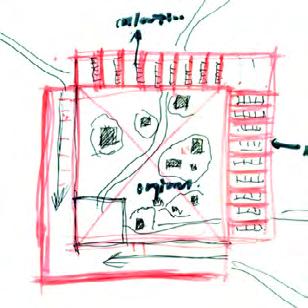
CEMETERY URBANISM 010
the last day when the tomb was dismatled Spring 2023 | Junior Studio

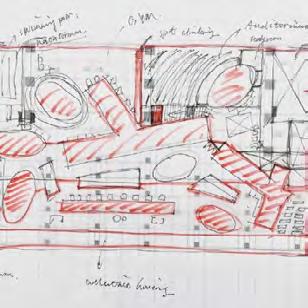
STILL STANDING
Non-Place Fall 2023 | Junior Studio
029

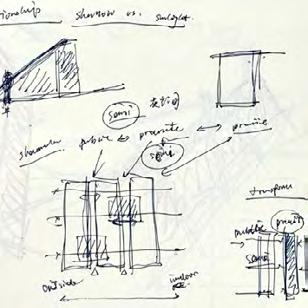
The Shape of Shadow 019
how to construct a shade-providing/wind-resistant/large-span/light-weight/low-cost shed Summer 2023 | Construct Practice

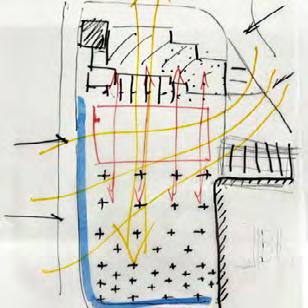
OTHER WORK
036
Formal Analysis, Concrete Physical Model, Maison de Verre Physical Model, Collages, Posters Artworks, drawings
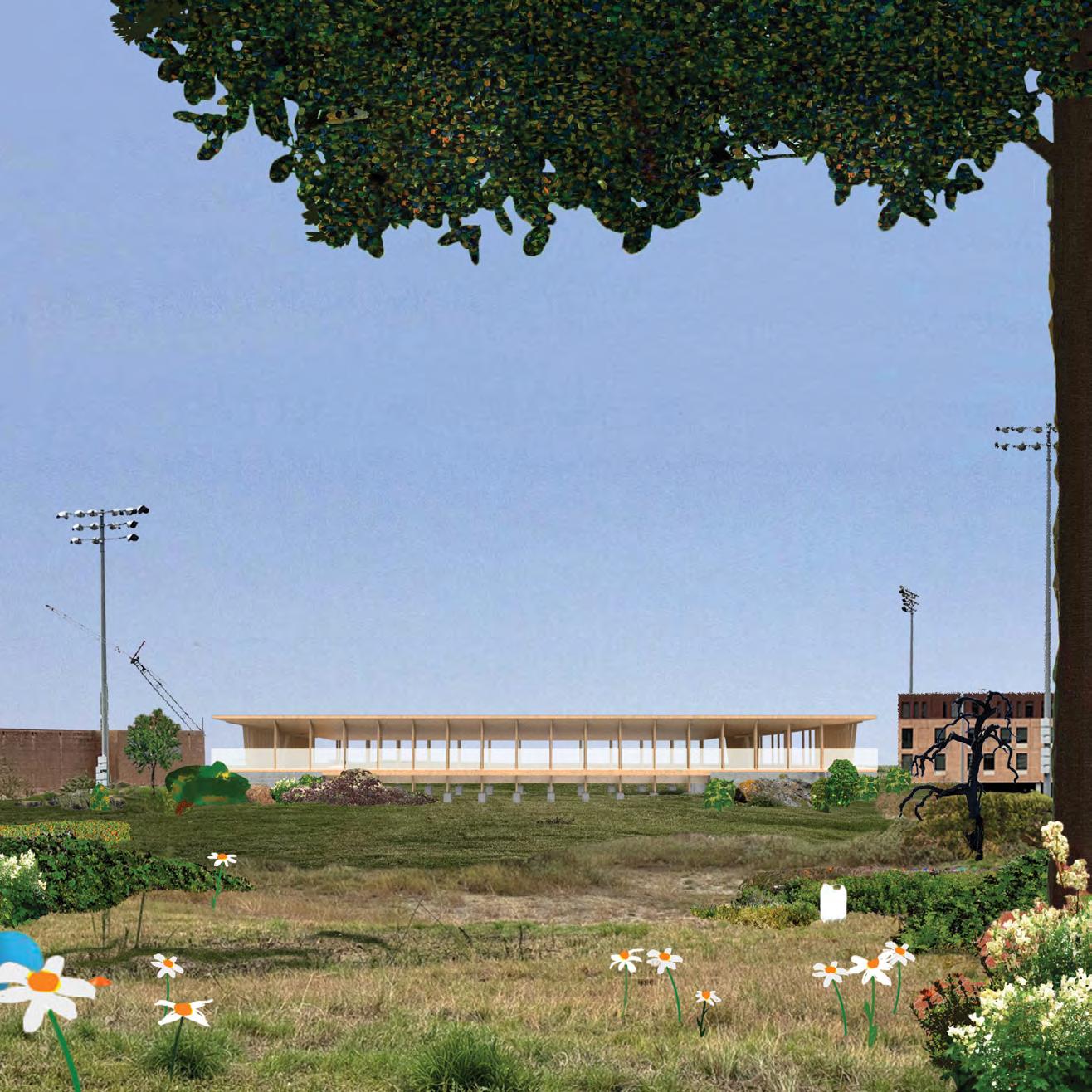
Infrastructure as an Architecture atmosphere: interactive natural performance
2024.10-2024.12
Project type: Graduate Studio Project Individual project
Houston is a seasonal weather area. Usually, there are only two extremes, one is hurricane season with rainstorm, other one is dry or high temperature with sun. The site vividly shows the two-weather phenomenon. Rainy shaped the site, creates clean boundaries between plants and soil naturally represent flooding footprints, and several drainages in the site link to the city infrastructure system, proving past ponding status on the site.
The project as the continuous of the site two characteristics architectural interventions that are benefited by the seasonal water-changing characteristic to achieve both helping collect rain during the hurricane season and creating shade though the sunny days. Rectangular slope roof leading the rain water flow into the center yard.
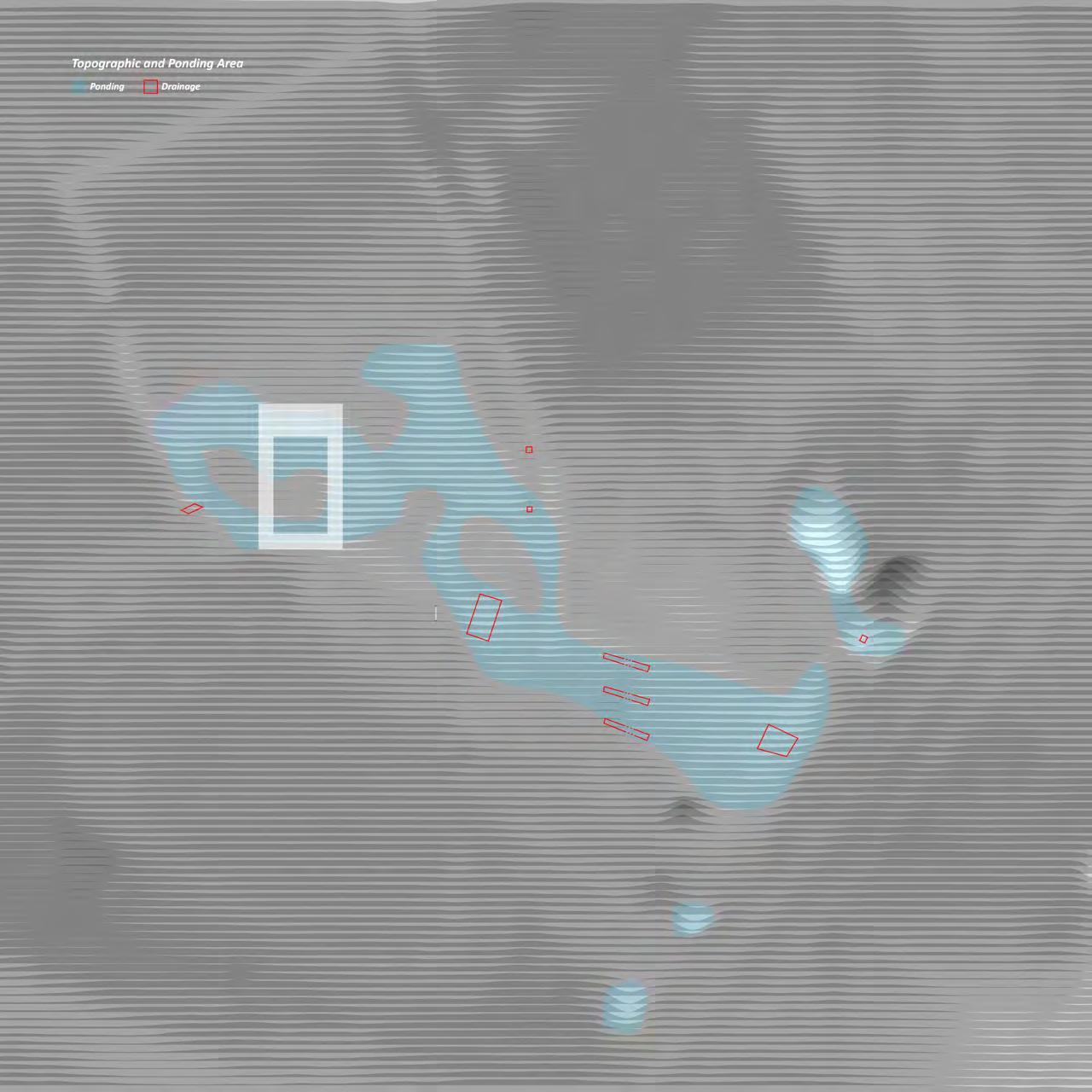
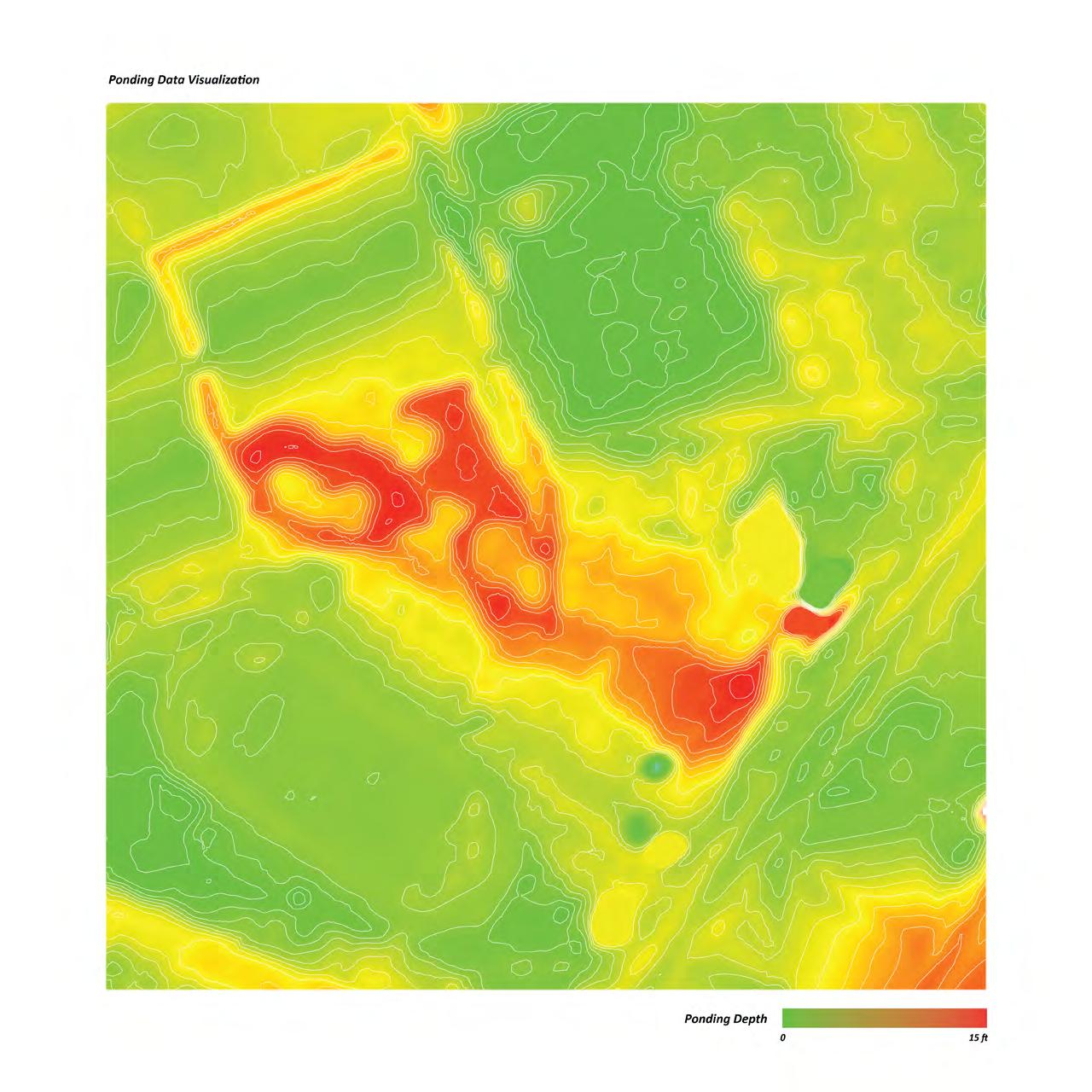
Distribution of topography within the site and distribution of existing drainage infrastructure. There are total of nine drainage facilities distributed across the site that link the site to the Houstone Urban Flood System. White block is design project.
Assisted by statistical analysis in Rhino grasshopper, the site is the one of the lowest part in the whole campus also contributes during the flooding period, as water will pool into this area. And during the most of the rest of the year, it is totally dry state on the site.
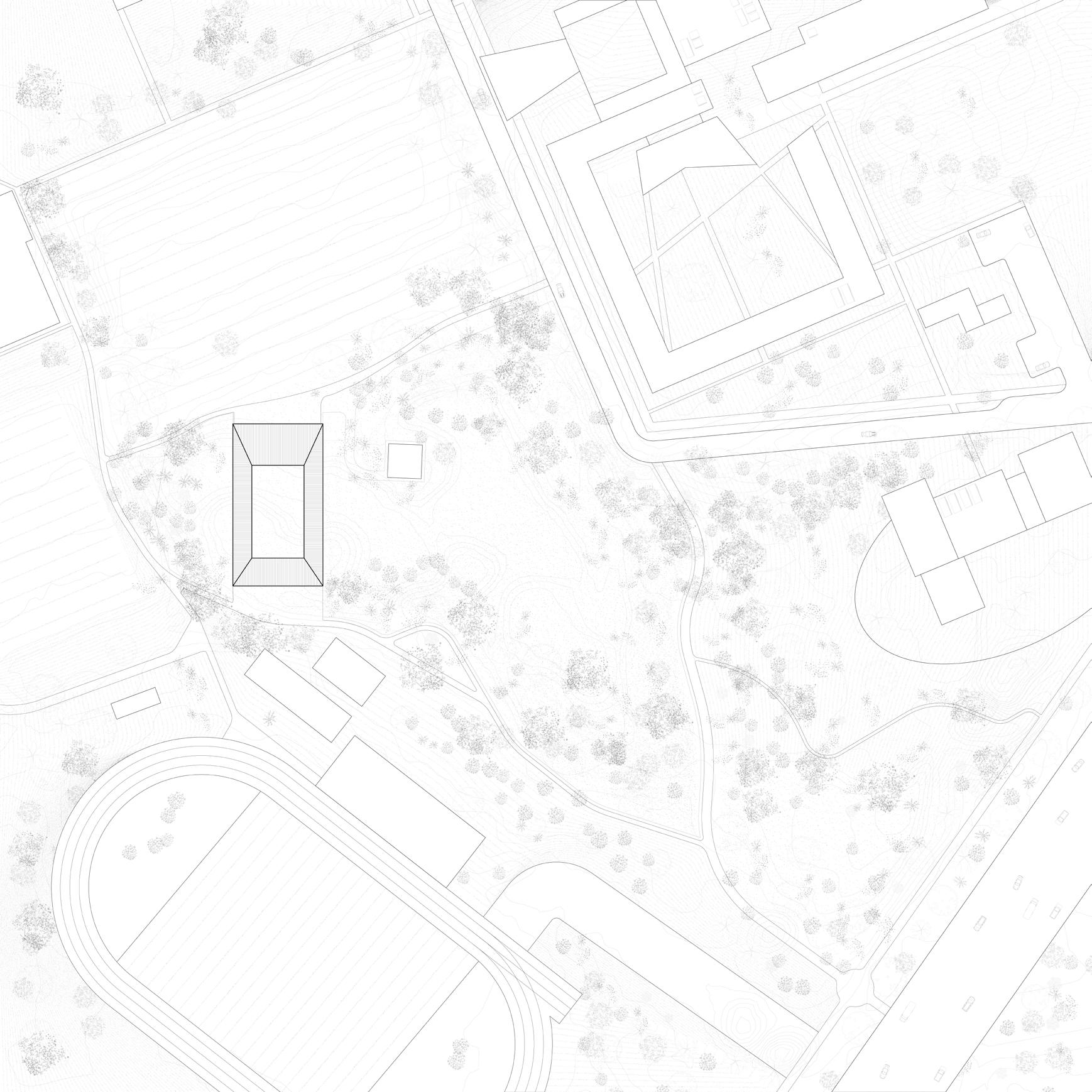
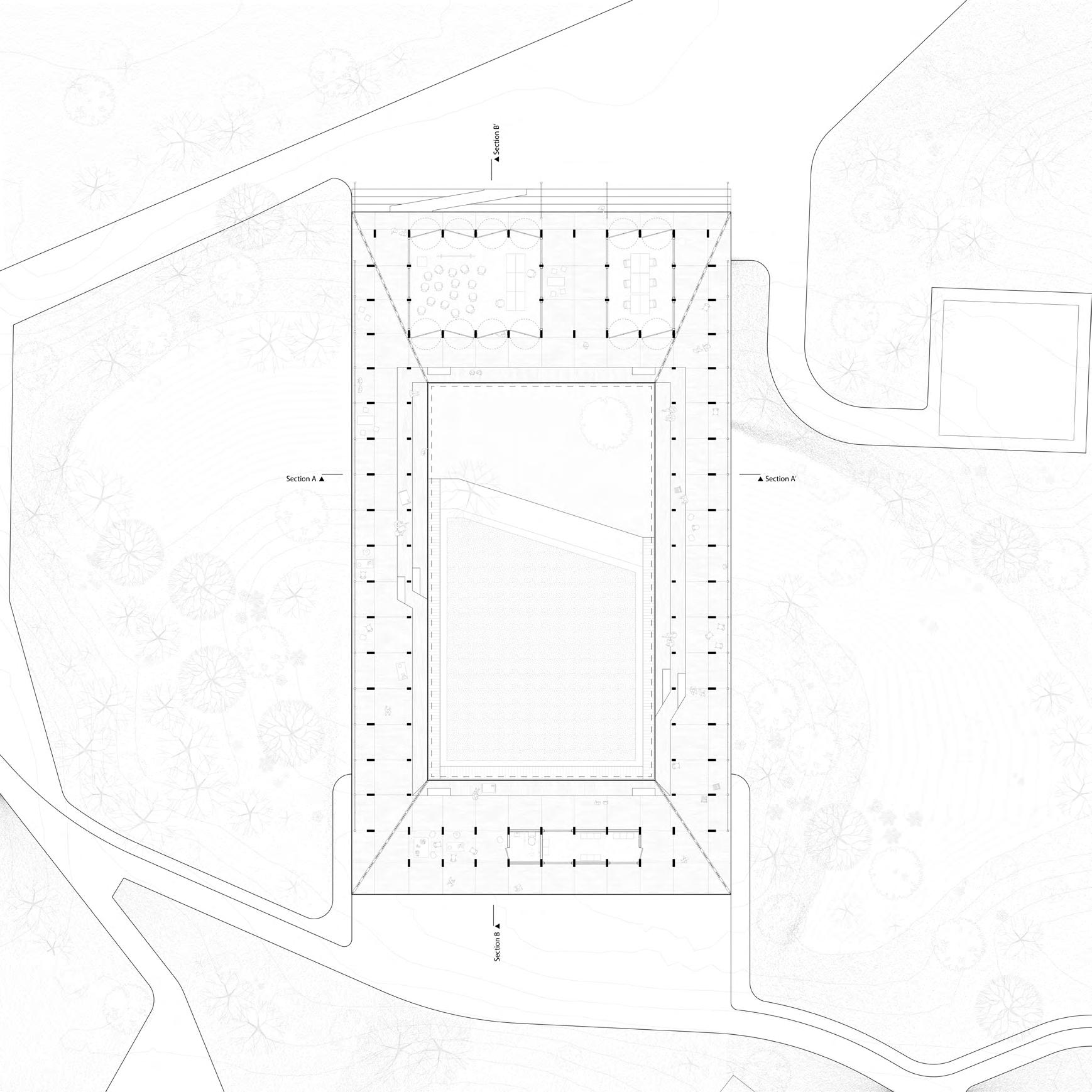
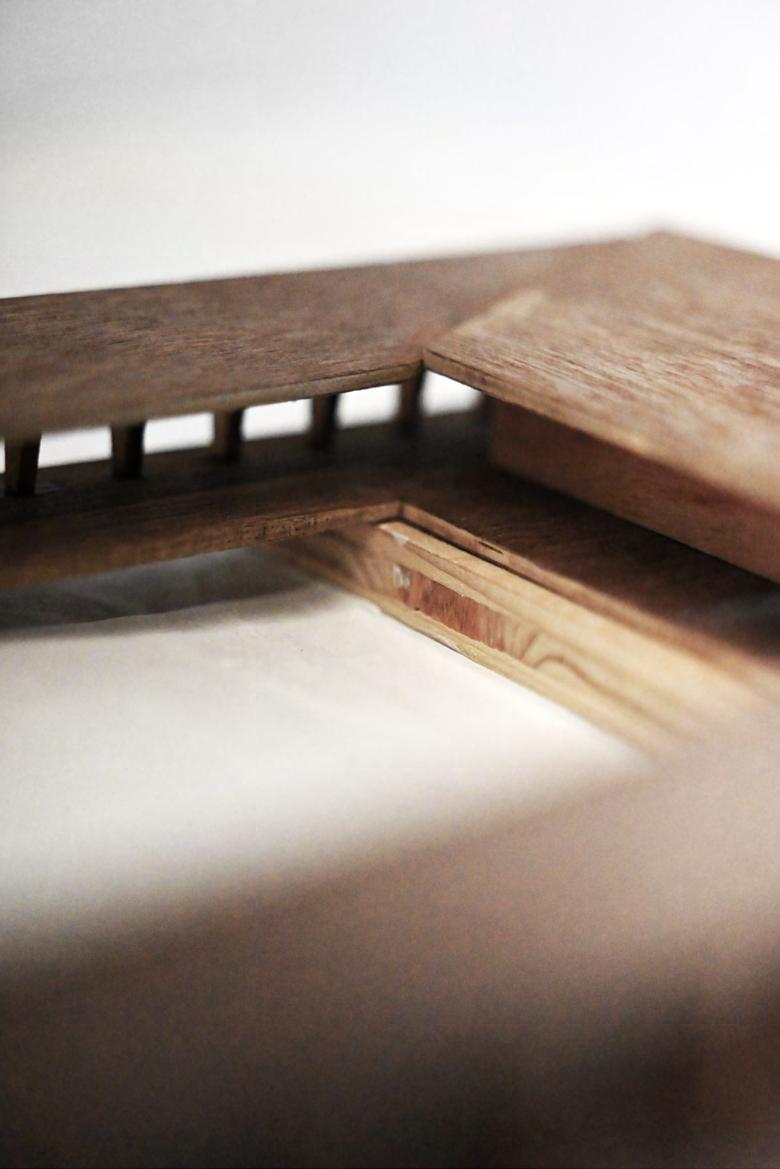
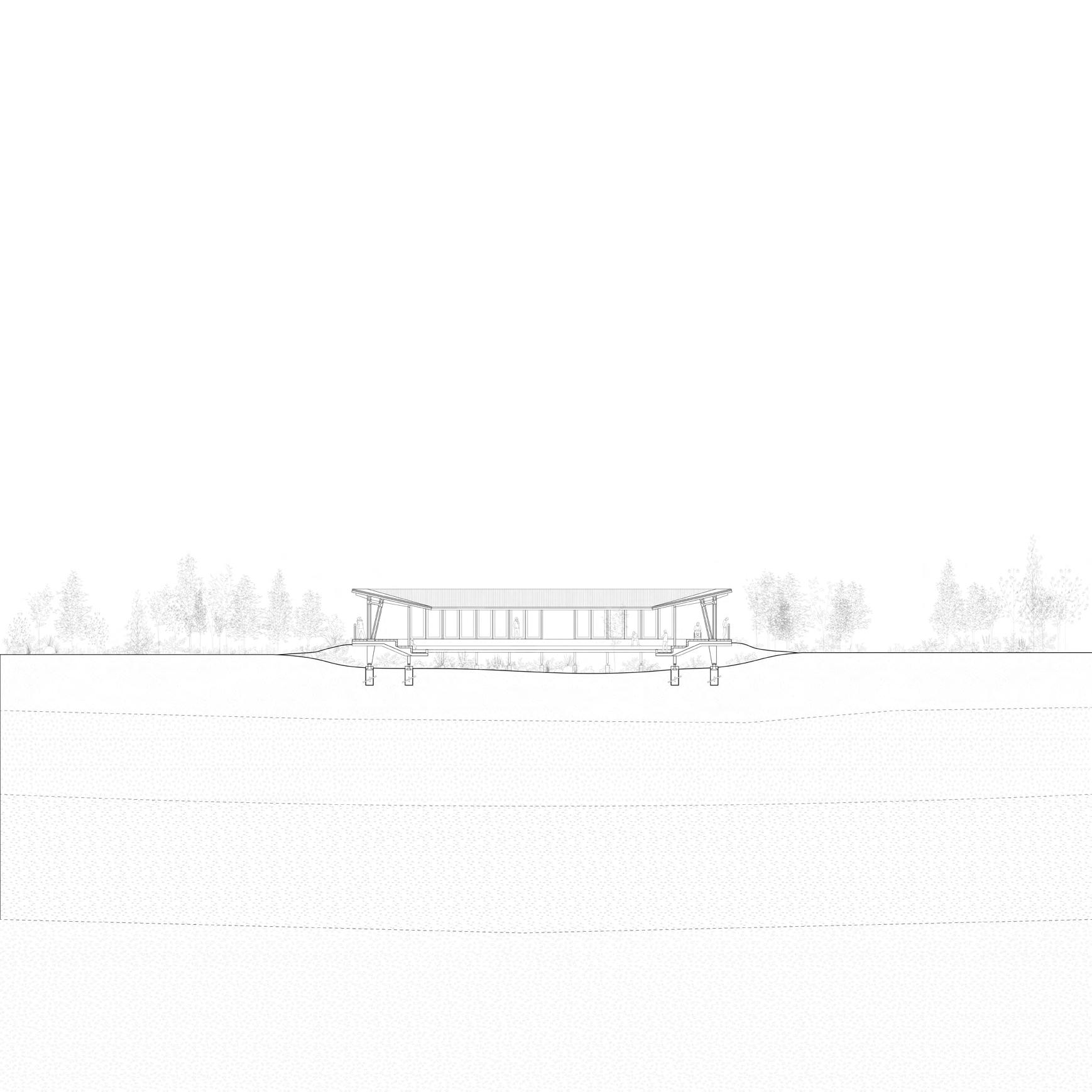
The center yard has been left as the more natural and organic condition to keep the wetland system and more space to absorb and bear the rain water. The center yard still consider a potential platform for performance which is deeply fusion and integrate with original wetland landscape and the infrastructural architecture intervention. Under roof area provide some semi-indoor space for people, they could enjoy the rainy scenery under the roof, or sit at the edges on the bridge getting close with nature. And also people could have the shady and cool activity space in the sunny days.

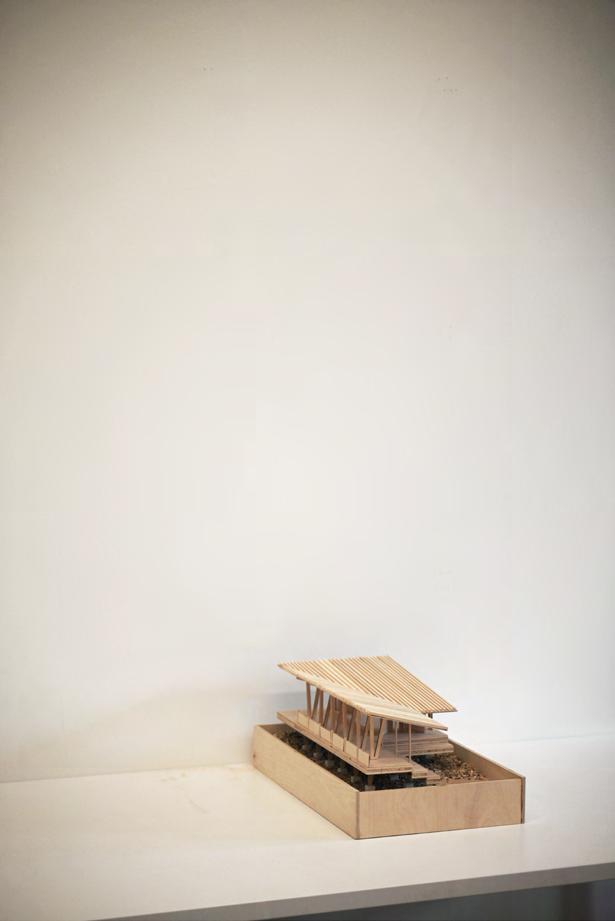
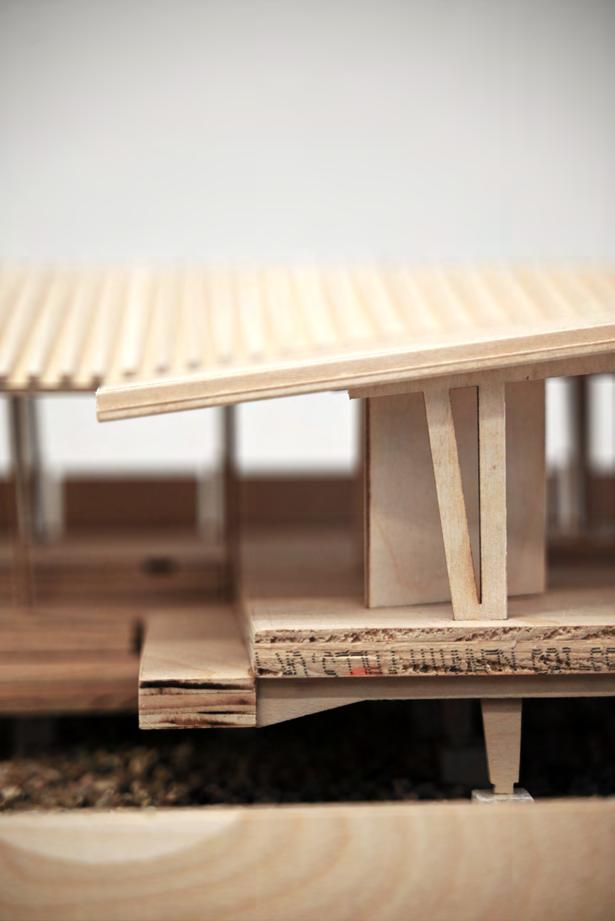
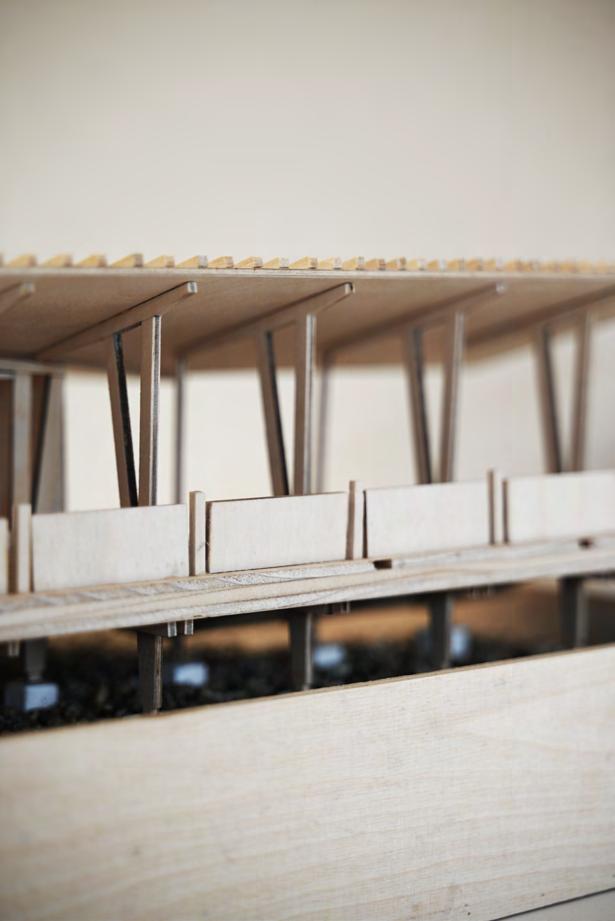
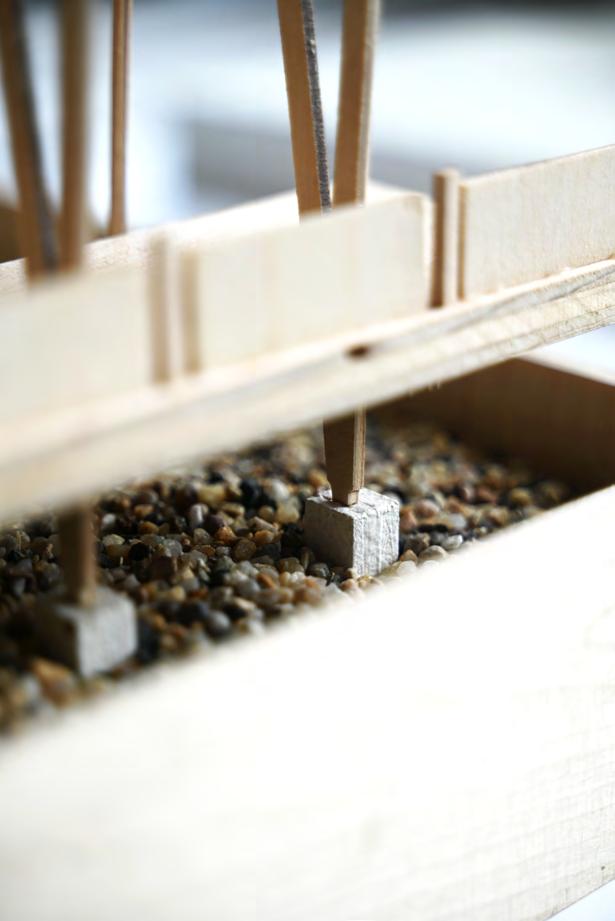
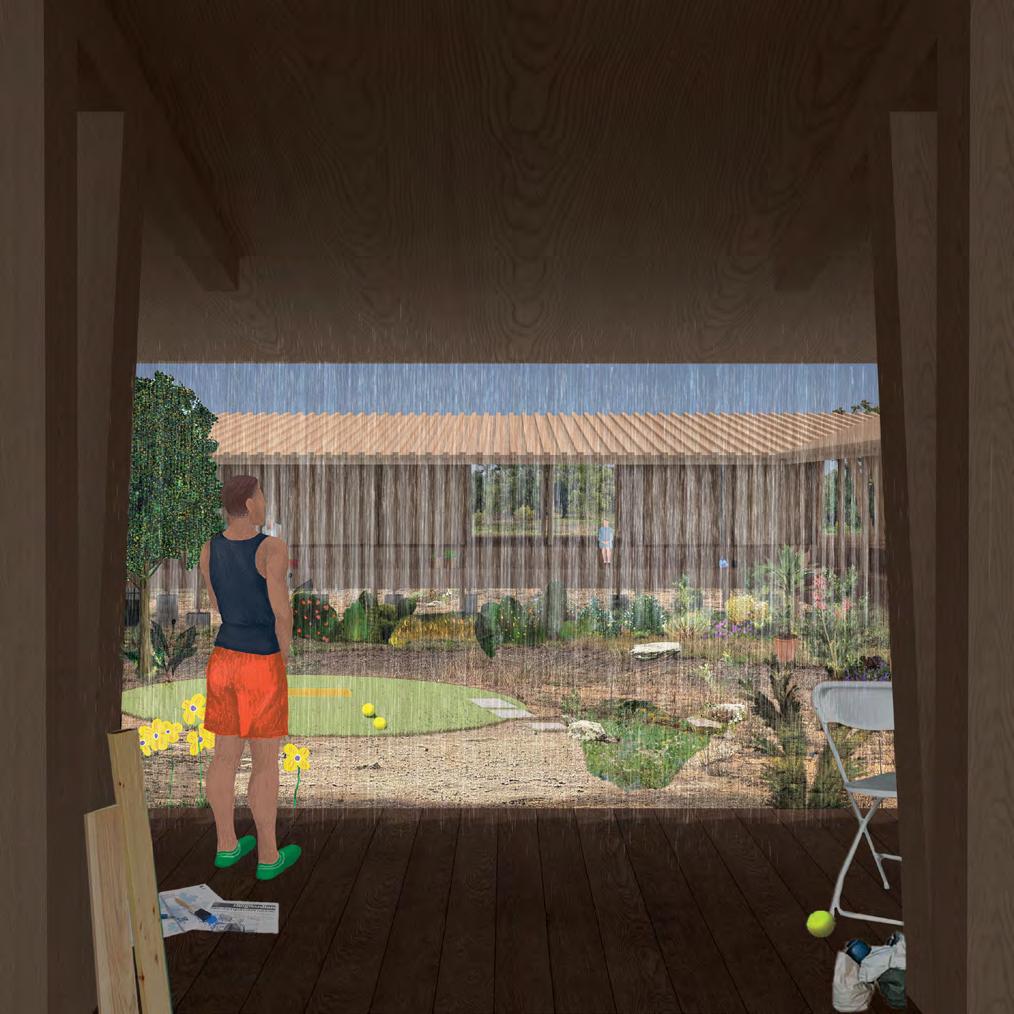
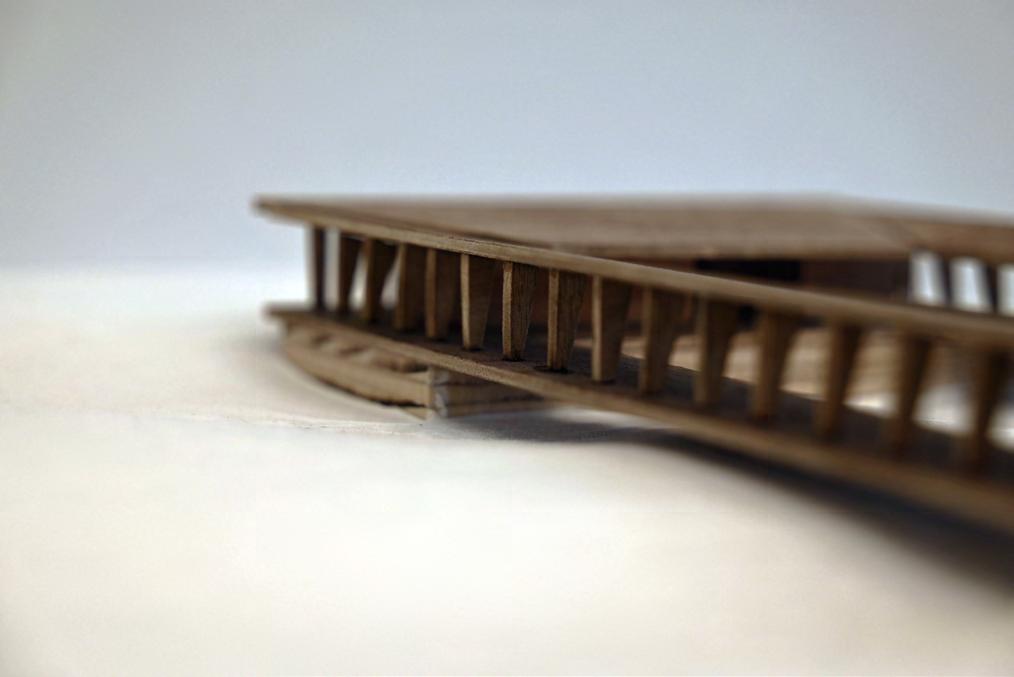
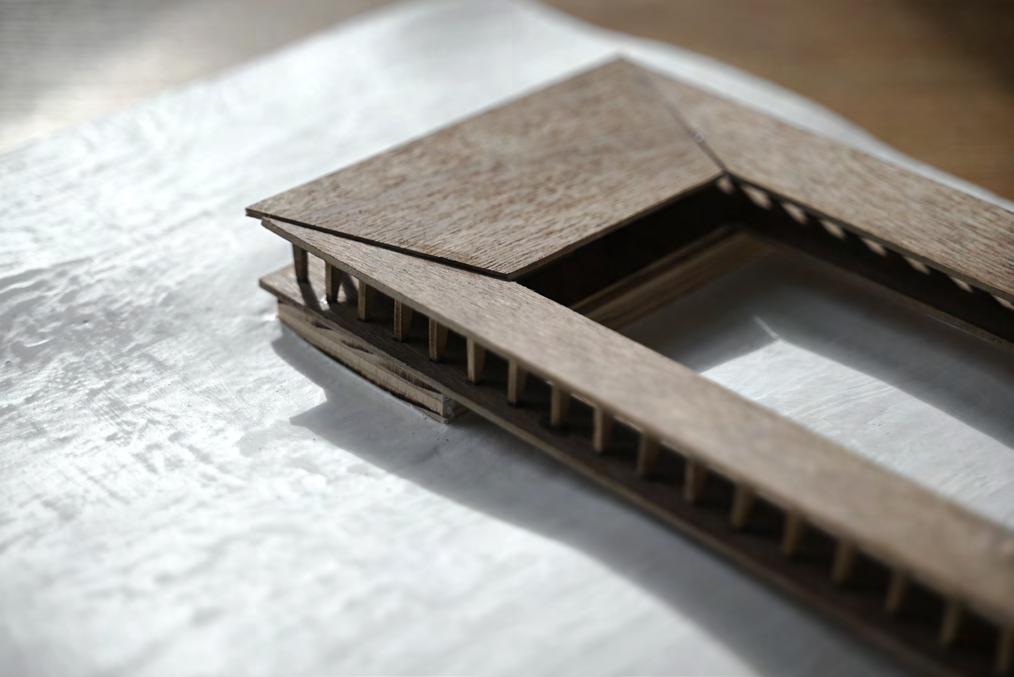
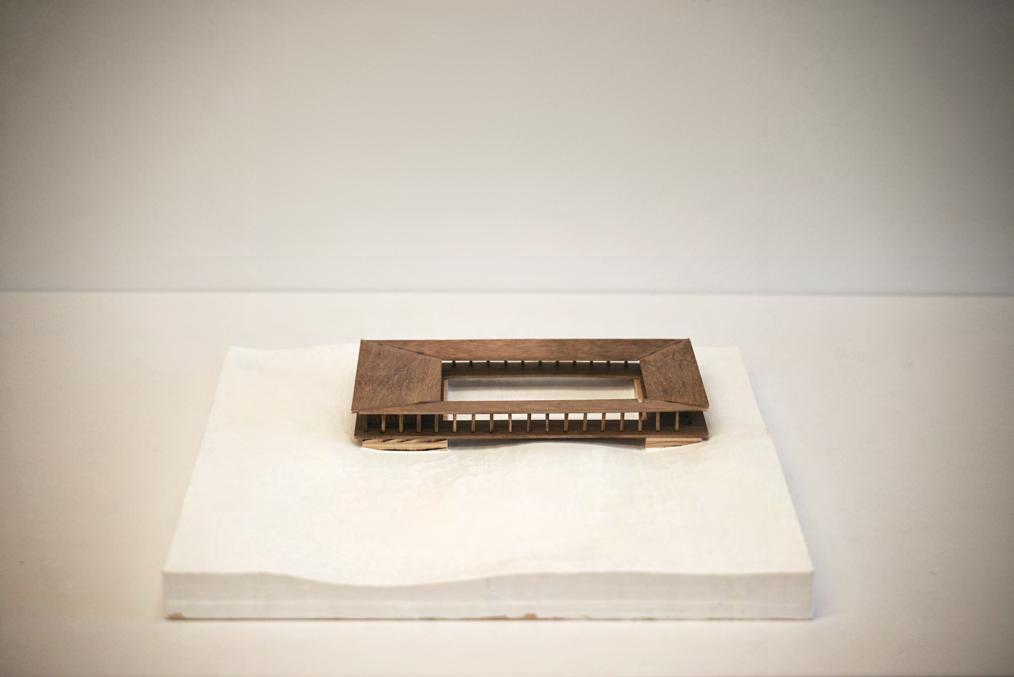
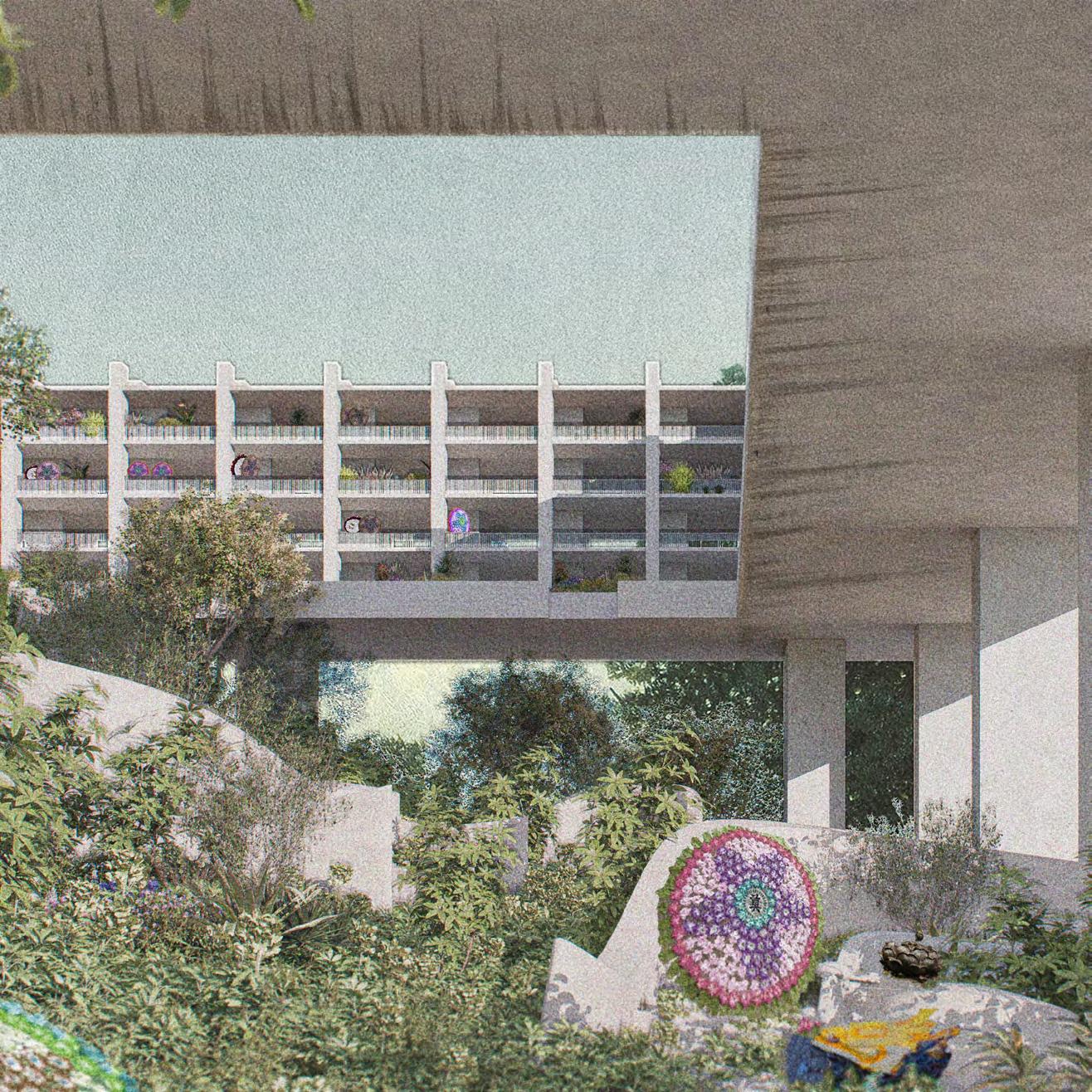
CEMETERY URBANISM
"the last day when the tomb was dismantled"
2023.02-2023.06
Project type: Junior Studio Project Collaborative projects: research, space design, technical drawings
Before one could grasp death, it is important to be able to articulate the status quo within the historical, cultural, as well as social-economical, and social-political fabric of the world.It also challenges the constructed transitory nature of death in the modern world, where we in essence have to choose between two forms of death-making, that of the citizen of that of the private individual. Whether it is the death of a citizen or an individual, tombstones are proof of existence
However, in the face of the wave of urbanization in China, tombstones have been pushed down, submerged, moved and perished countless times. In Wenzhou, a coastal region of China where family, culture, and religion are highly valued, there is simultaneous rapid economic and urbanization. Tombstones continue to be neglected, and mountains full of them can disappear in just one night.
When death is inevitable, can the gravestones, the last vestige of dignity, only disappear in the face of the cold, icy machinery of urbanization? The project hopes to find a new coexistence through theoretical research - site investigation - design.
Decomposition of the Body, Bios and Zoe
Bios and Zoe are what the ancient Greeks used to describe 'life.'
Zoe refers to organic life. Organic life, in a simple way, can be defined as a scien�fic defini�on of what life is, or the existence of the ability of life, and only this, and not of what type/quality of life. The loss of Zoe, of organic life, through observing each step of decomposi�on, a ritualis�c prac�ce exists to counter the effects of this decomposi�on. While evolving into something mys�cal and religious, these rituals and prac�ces are also a way to preserve the poli�cal existence of the person who just died. This poli�cal existence can then be linked to the idea of bios. Even in death, being afforded the ritual of funeral and burial it is a recogni�on of the existence of poli�cal life within the individual.
Bios are the essence of life, the manner of life, what type of life, how life is lived, and the poli�cal func�on of life(the poli�cal life). In this defini�on, poli�cs is not what we see as a 'spectacle of poli�cs,' which includes processes like vo�ng or the membership of a poli�cal party. Instead, a 'poli�cal life,' understood fundamentally, means a person/life par�cipa�ng in society and its development.
putrefac�on
pallor mor�s
As the body dies, the cells in the body begin to die, and the immune system becomes zes for a permanent time.In the process of bacterial reproduction, the human body will produce lot of gases, which will overflow from the mouth,nose or anus.
After death,the blood begins to sink under gravity. The skin became even paler.
About three weeks after the death, the hole inside the body began to burst, and the nails and teeth began to fall out. burst
rigor mor�s
blood gather
"giant view"
highly decomposed
black patches
subcutaneous adipose
algor mor�s
local drying
The muscles will gradually become stiff, and the joints will become fixed. And spread from the local to the whole body within 4-6 hours.
As the metabolism ceased, the carcass gradually decreased to coincide with the ambient temperature.
livor mor�s
skeletoniza�on
corilage phenomenon
corneal turbidity
As the corruption gas increased, the limbs and the whole body began to swell. This is the famous "giant view" phenomenon. At this point, the body will begin to spill away from its excrement. A month after the death, the body was highly decomposed, when was impossible to identify the face, and the body was completely black or liquefied.
With further decay, black patches appear inside the body, and the body expands to the extreme.
In summer, body weights are reduced faster, with neonatal bodies being reduced faster than adult bodies.Due to the evaporation of the water and the reduction of the weight, the body was various locally dried.
Two hours later, the blood constantly deposited below the body, and dark red and purple marks began to appear on the skin.
Forty-eight hours
About 6-12 hours after death, corneal turbidity will occur. At this time, the dead's cornea began to become inactive.
Body wax refers to the dirty yellow and white wax substance formed by subcutaneous adipose tissue after saponification or hydrogenated under special environment.
Six months or a year after death, the body becomes a white skeleton as the skin and muscles all down.
Tomb and Rememberance
Through the crea�on of tombs, the memory of the dead is preserved. Nevertheless, the tomb is beyond just an apparatus for remembrance. The rituals of remembrance, connec�ng the living to the dead individual, in a way, maintain the poli�cal relevance of the dead individual. While together with the physical corpse, its organic life, its zoe, has faded, its ability to be a poli�cal par�cipant of society s�ll retains; there are s�ll traces of bios, even if diminishing over �me. Life, in another defini�on, persists.
WenZhou tomb forms diagram & worship behavior diagram
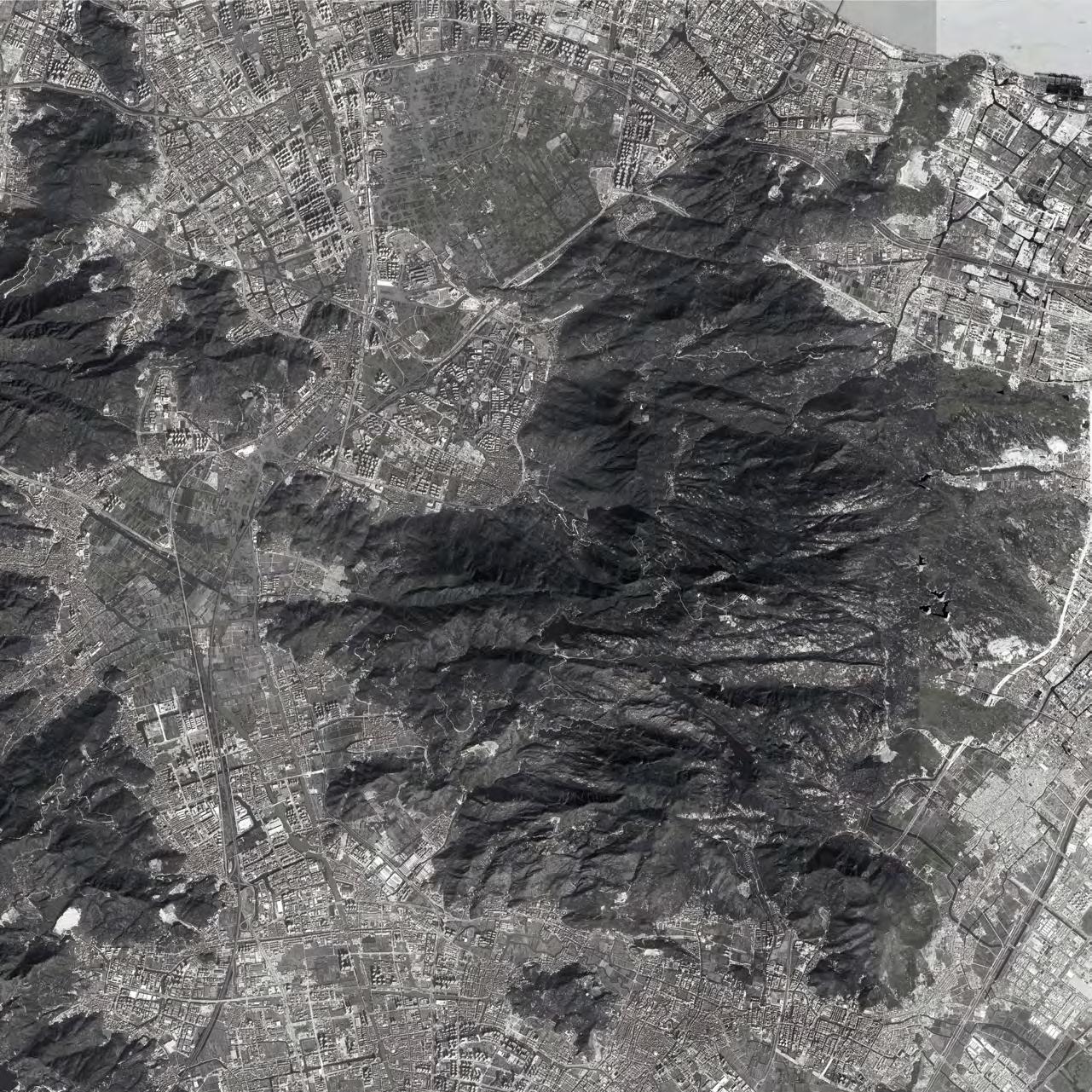
Wenzhou, China
Urbanization machine vs. cemetery
Wenzhou, China, has an astonishing number of cemeteries. The earliest appearance of these dense cemeteries can be traced back to the founding of the People's Republic of China, and their rapid development occurred in the 1970s, when China began to carry out economic reforms and opening up to the outside world.
Surrounded by this Chinese coastal city with a popula�on of 10 million, the emergence of dense tombs and centralized cemeteries naturally makes the project focus on the conflict between death and urbaniza�on. The project selected three comparison objects in a targeted and iconic manner. Through the study of urbaniza�on and the number of cemeteries, we found that cemeteries develop together with urbaniza�on in some areas, while in some places, urbaniza�on is like a huge machine. Everything they saw was bulldozed, and whether they were independent graves or centralized cemeteries, they disappeared into history like helpless war slaves.
diagram: distribution of cemeteries in Wenzhou
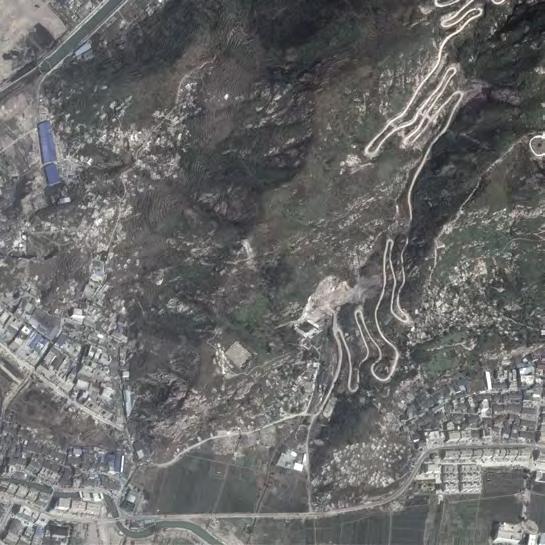
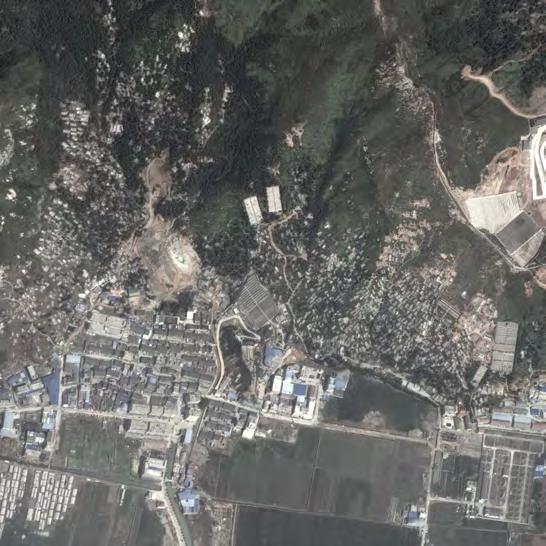
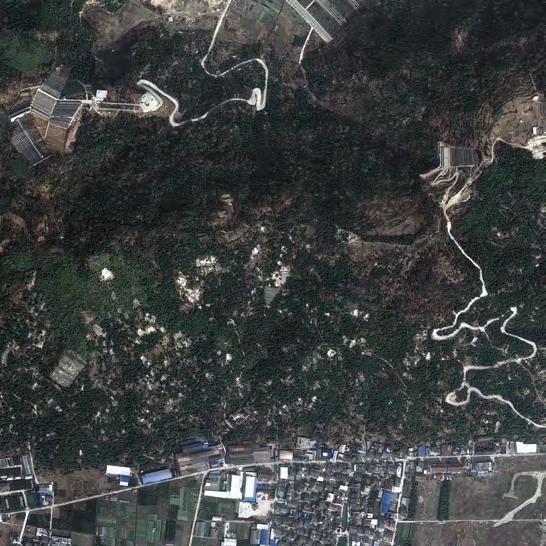
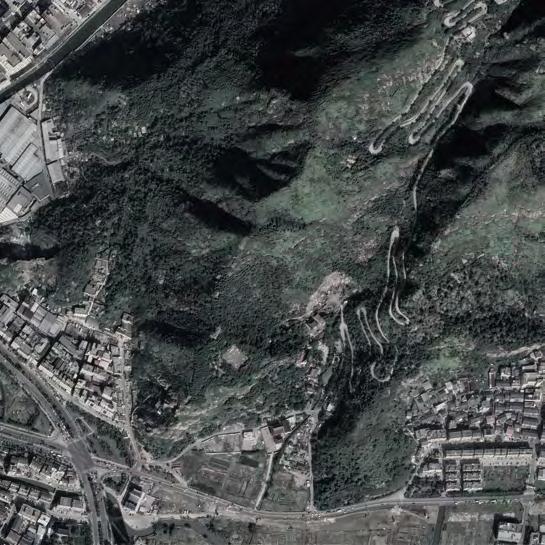
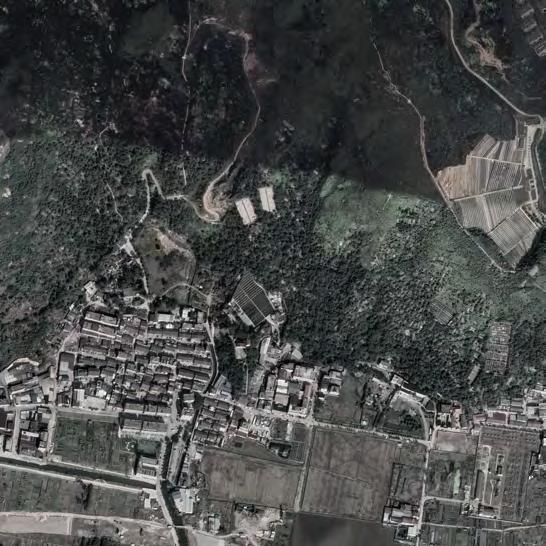
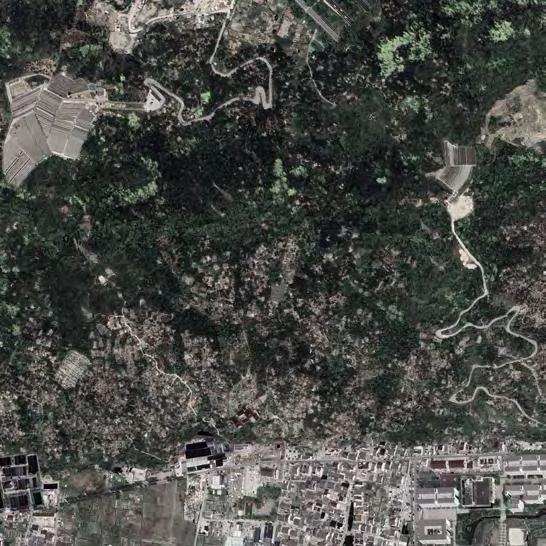
Village 1
Cemeteries: Decreased, Mass burial: No changed, Urbanization: Small Changes
diagram: comparison of cemeteries in three regions
This village has not changed very much in 20 years, both in terms of size and mentality. The corresponding situa�on is a decrease in the number of individual cemeteries and no significant change in the number and size of centralized cemeteries.
Village 2
Cemeteries: Decreased, Mass burial: Increased, Urbanization: Decreased
This area is unique in that the number of individual cemeteries has declined, but there has been a large increase in centralized public mass burial, and at the same �me, towns and ci�es have shrunk in size, which is not common in China in the midst of an urban wave.
Shantytown
Cemeteries: Increased, Mass burial: Increased, Urbanization: Developed
Urban villages are huge in Wenzhou, and the number of cemeteries corresponding to them seems to have developed along with the urban villages, and such a phenomenon is quite extraordinary. And in contrast to the village 2, the cemetery should not be an element that hinders development.
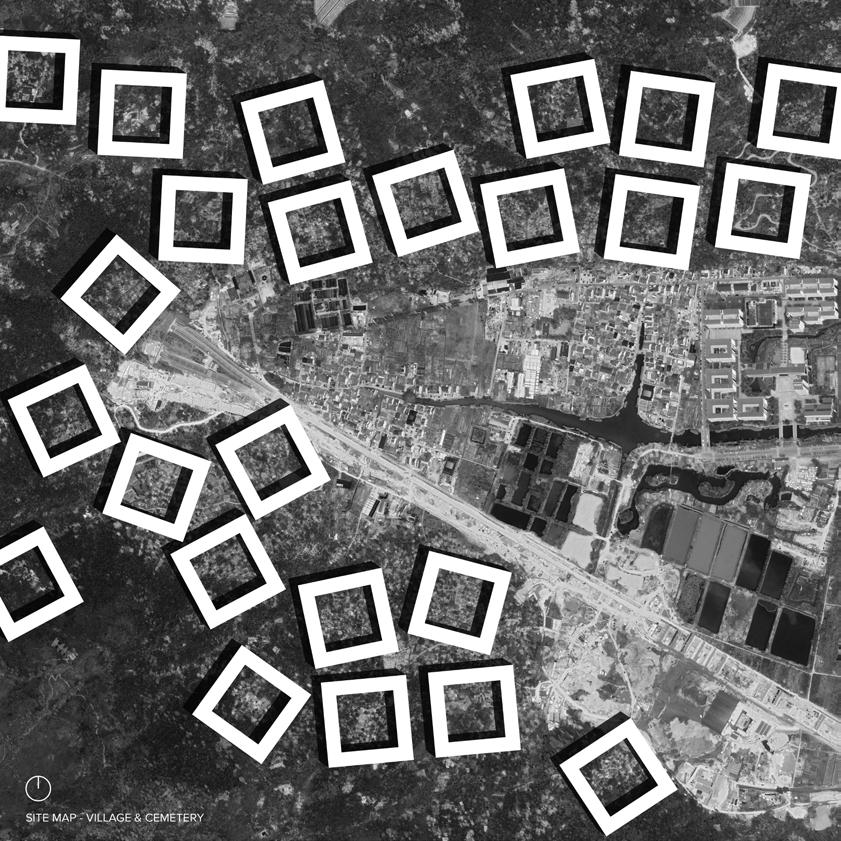
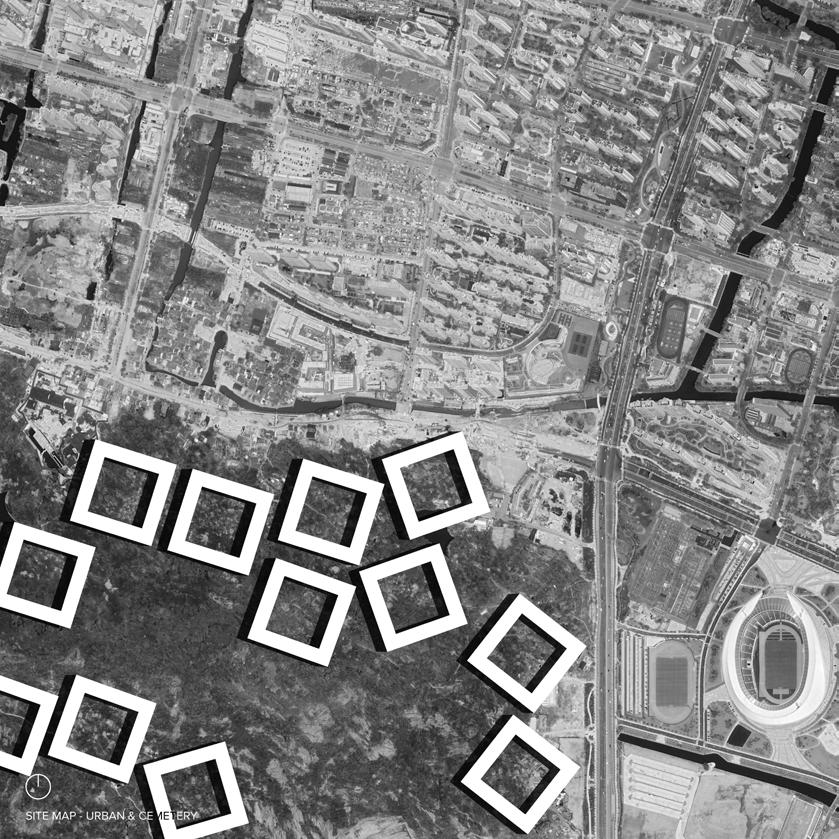
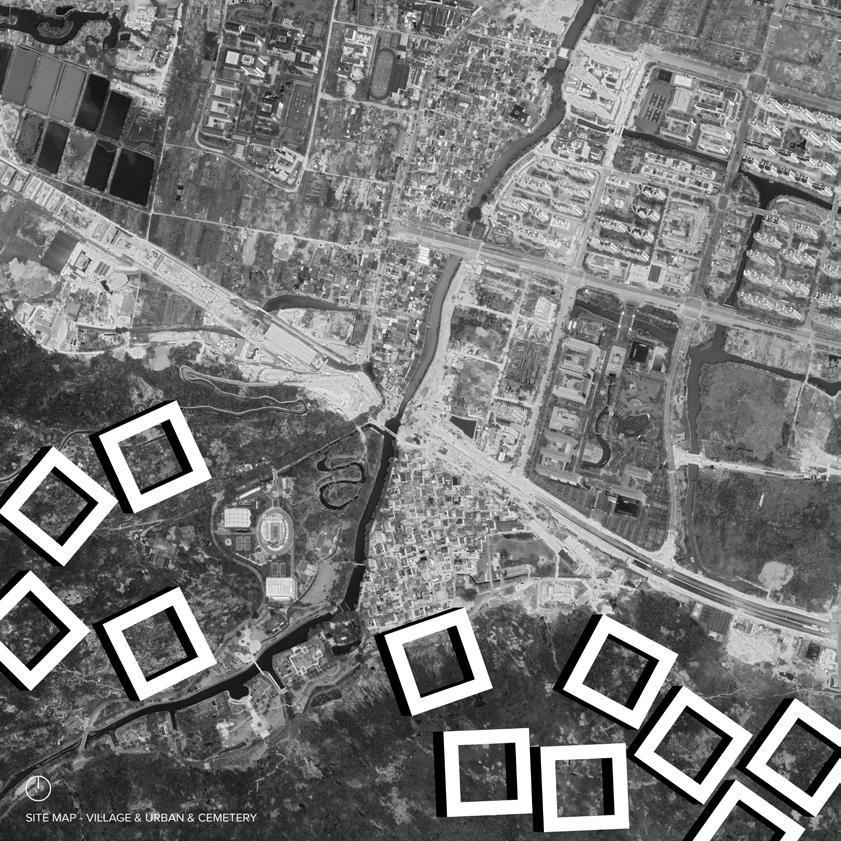
The rela�vely high density of cemeteries in rural areas is partly due to the high number of graves on the original sites, and partly due to the fact that more cemeteries will certainly be needed as a result of popula�on build-up as a site for future urban development.
Cemeteries close to the city are distributed based on the number of status quo purposes and urban grid extensions. Along with the development of the city, the project is proposed in the hope of changing the tradi�onal percep�on of the cemetery by the capital, trying to create a coexistence between the individual and the capital.
The cemetery where the city meets the countryside combines the texture of the two areas with each other, a state of this moment of some kind of coexistence from the point of view of urbaniza�on, an original coexistence for the graves in the current state of the site.
The grave is the gateway that links life and death directly and is not a separate en�ty. On the one hand, it represents the traces of the deceased's existence and the recognition of his iden�ty. On the other hand, it responds to the foreshadowing and delay in the �meline. There are various types of tradi�onal Chinese graves, ranging from the simple to the complex, reflec�ng cultural specificity, with stele stones, inscrip�ons, eulogies, photographs of the deceased, monument makers, etc., all of which are meant to represent traces of the deceased's former existence and a moment in the �meline. If the ID card is the most basic physical means of iden�fica�on when a person is alive, the grave is a symbol of physical authentication after death
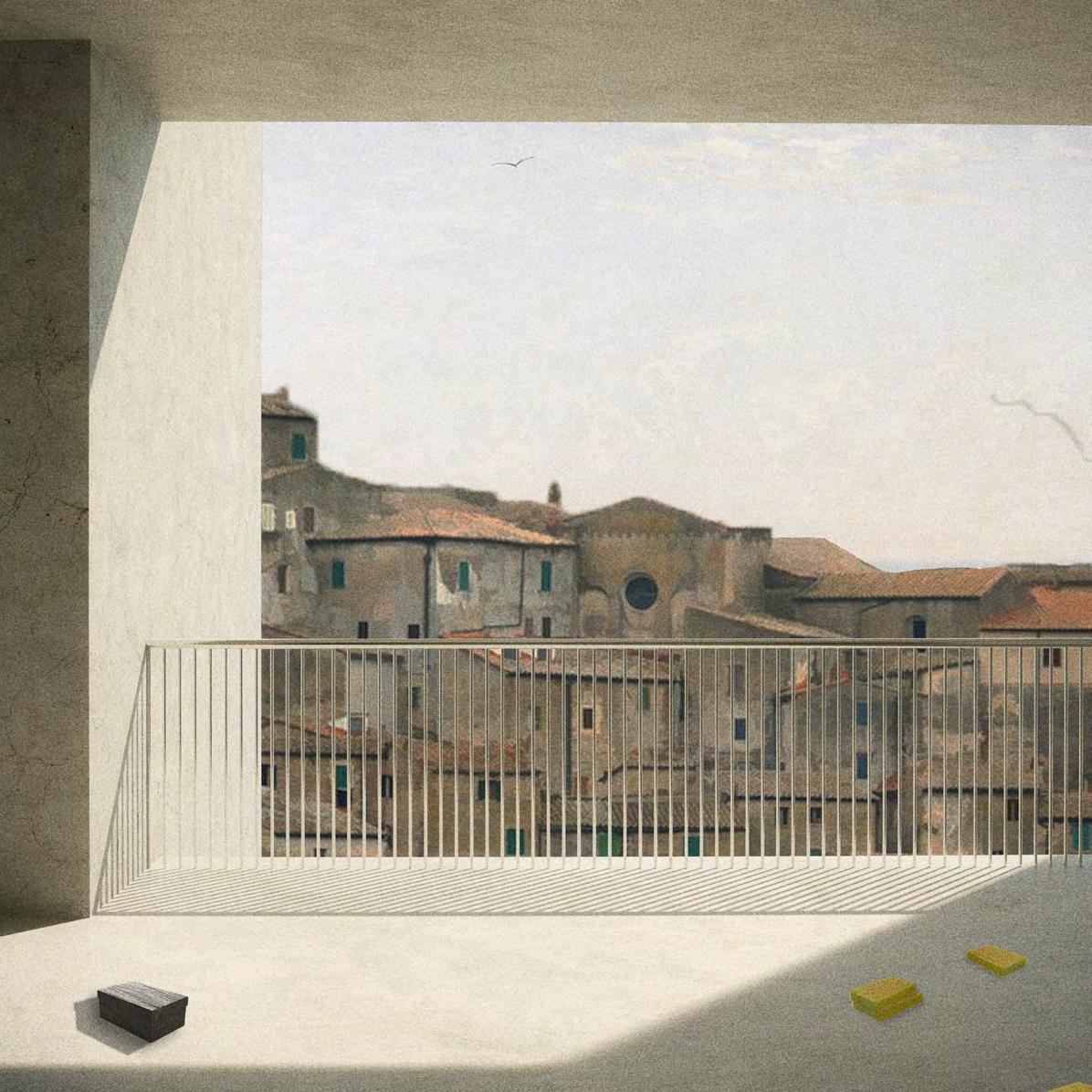
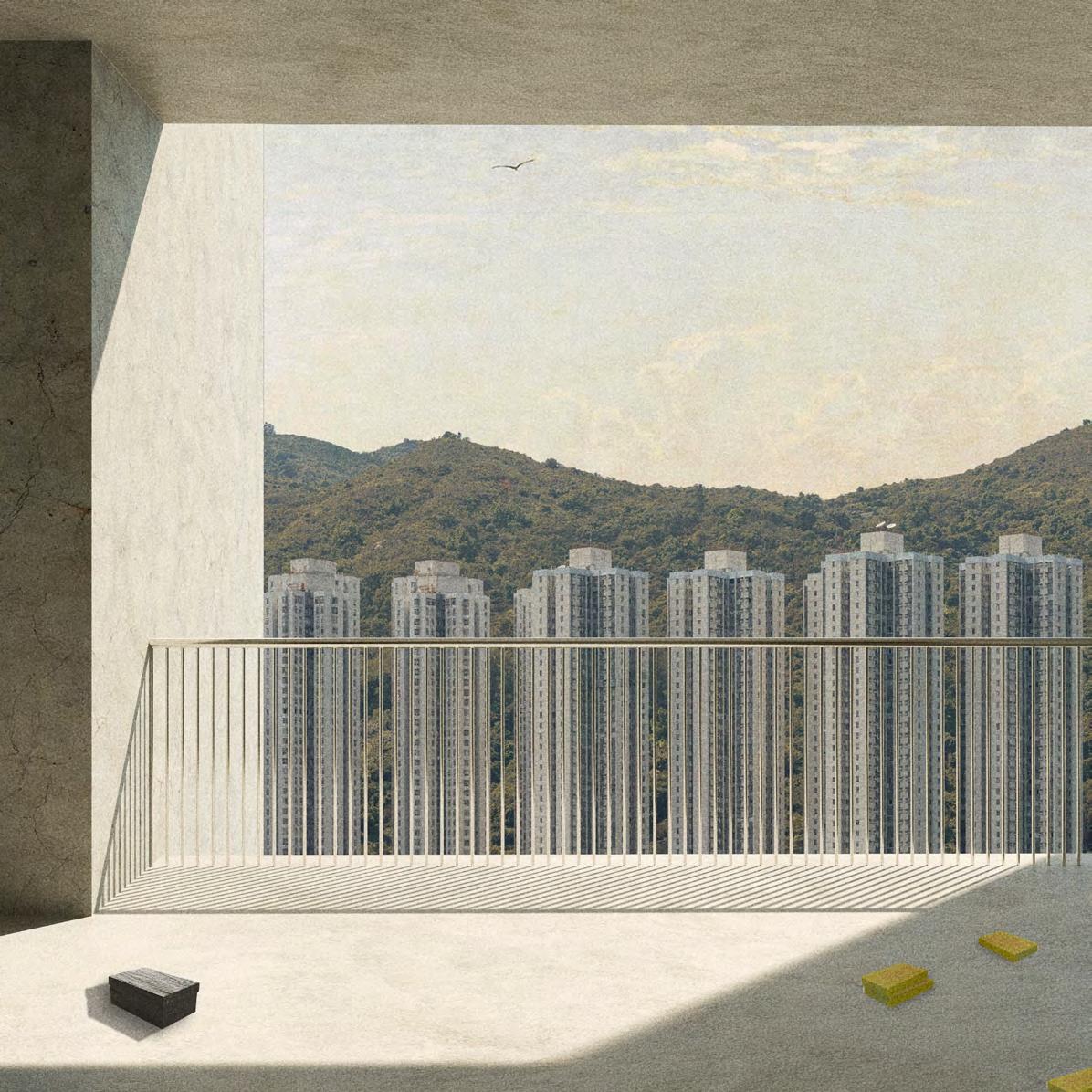
rendering collage - village & cemetery
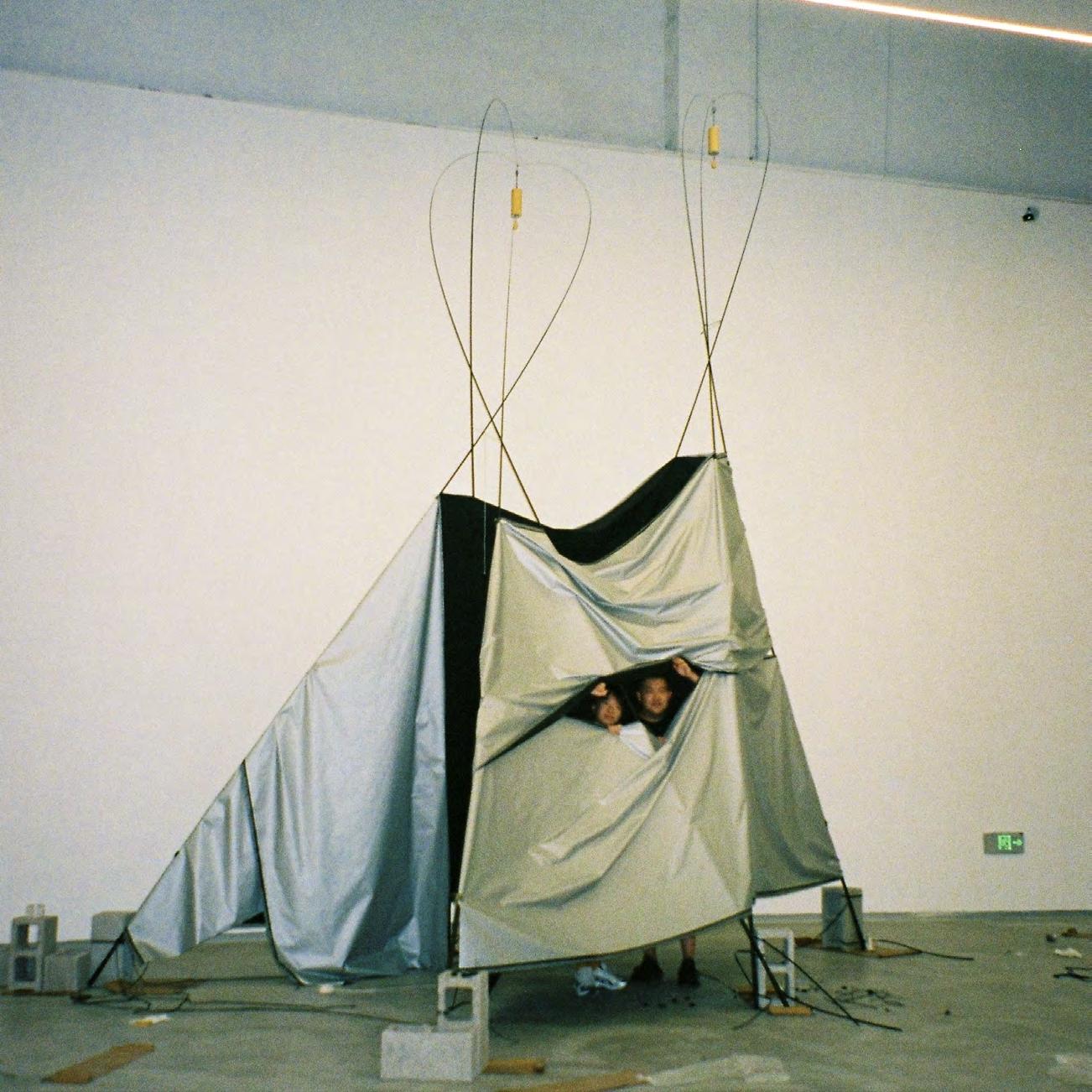
The Shape of Shadow "how to construct a shade-providing/wind-resistant/large-span/light-weight/low-cost shed"
2023.08 Project type: Construction: shadow building and structuring Instructors: Chen Donghua, Zhang Zhun Visiting scholars: Guo Yimin, Pan Hui Collaborative project: structural testing, drawings, construction
Sheds, in Pevsner's eyes, are not considered 'buildings', nor are they considered fully functional 'houses' in the eyes of many architects. A shed needs only a roof and a floor to hold a shadow. It is simply an everyday southern construct and open space, such as an insulated roof, plant stand, parking shed, a large stall retractable shed, a weather link, and so on.
Sheds often do not have a grand narrative and aesthetic, the will and interest of the literati, or a focal point for discussing the cultural differences between the East and the West. On the contrary, it is so down-to-earth that it can be found everywhere in different southern regions, becoming a common construction in the south. It is a structure and coexistence of climatic response, daily living, architectural culture, and collective life.
We carried out a 1:1 field build in Shanghai, China, at the Shanghai Museum of Contemporary Art. (PSA)
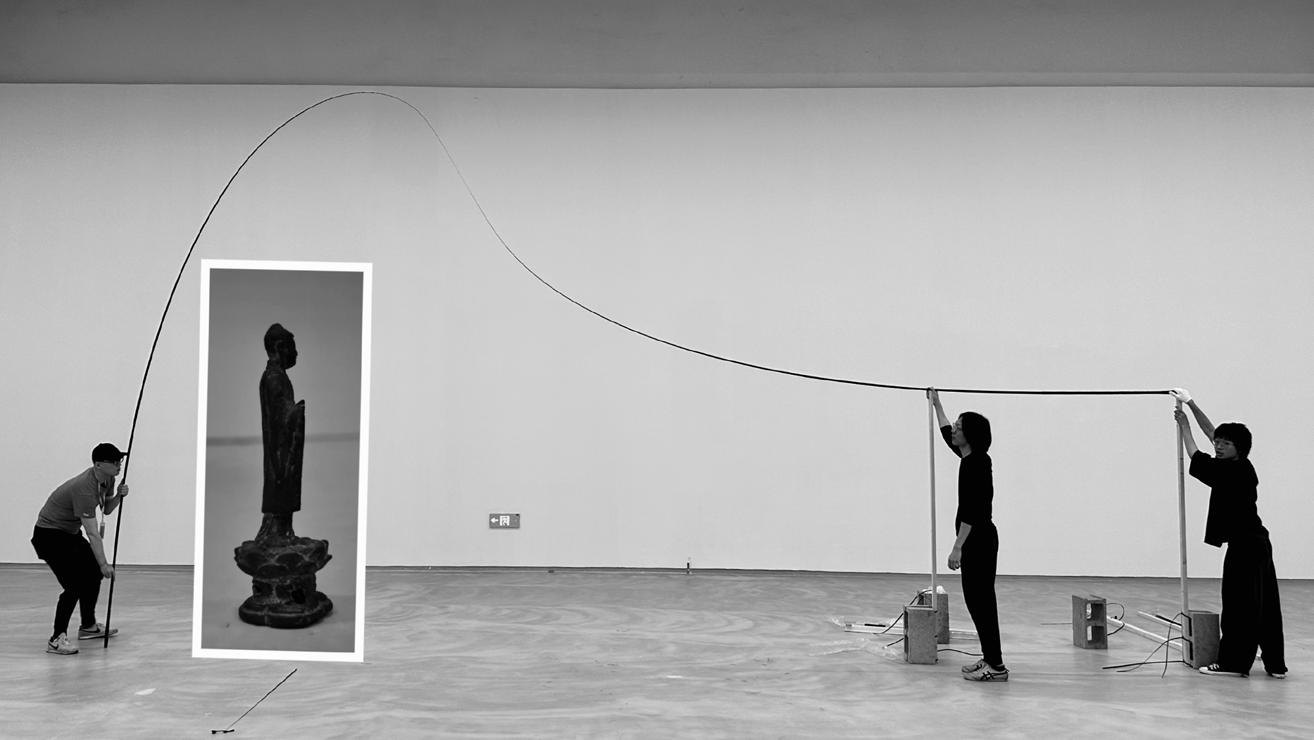

Fishing rods, fishing lines and hollow blocks are the raw materials for our building bases, which are extremely frequent in southern China. Fishing rods are used as the main structural material, fishing line as the connec�ng material and hollow bricks as the building base.
The construc�on and design are carried out in parallel. We first determined the span and form of the build by tes�ng the bending tolerance of the rods, and first carried out the design and build of a single set of modules indoors. In the actual construc�on process, the test data o�en deviated from the actual situa�on, and design modifica�ons were required according to the actual construc�on situa�on. interior structural testing photo #1
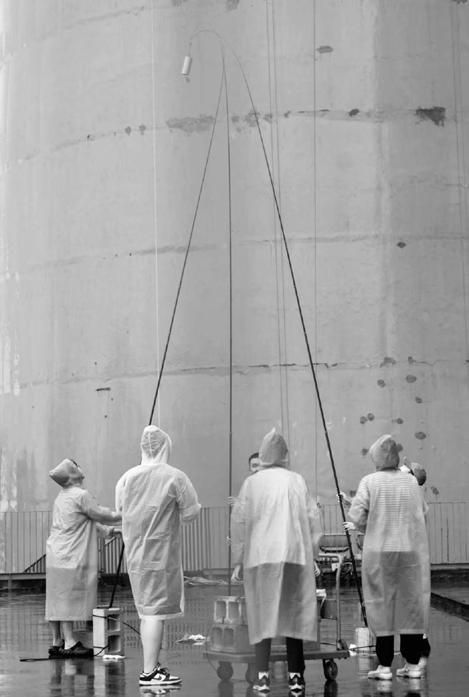
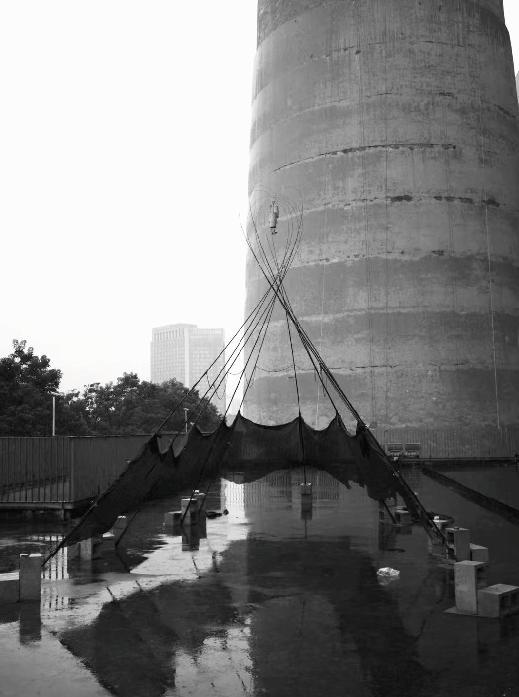
The choice of site for the build was unique, we chose to build our structure under the chimney of the power plant, an iconic building of the Shanghai Museum of Contemporary Art. (PSA) The collision between the dynamic structure and the monumental symbol of the power plant chimney here naturally gives us a contradic�on, but also a coexistence.
The difficulty of building outdoors is immense. On the one hand, heavy rain and typhoons for many days in a row made it difficult to ensure the stable and reliable condi�on of the building, which was mainly constructed with fishing rods. On the other hand, the shape of the superstructure needed to be adjusted many �mes before it could be op�mized. The indoor test setup took only 2 days, but the outdoor setup took 5 days.
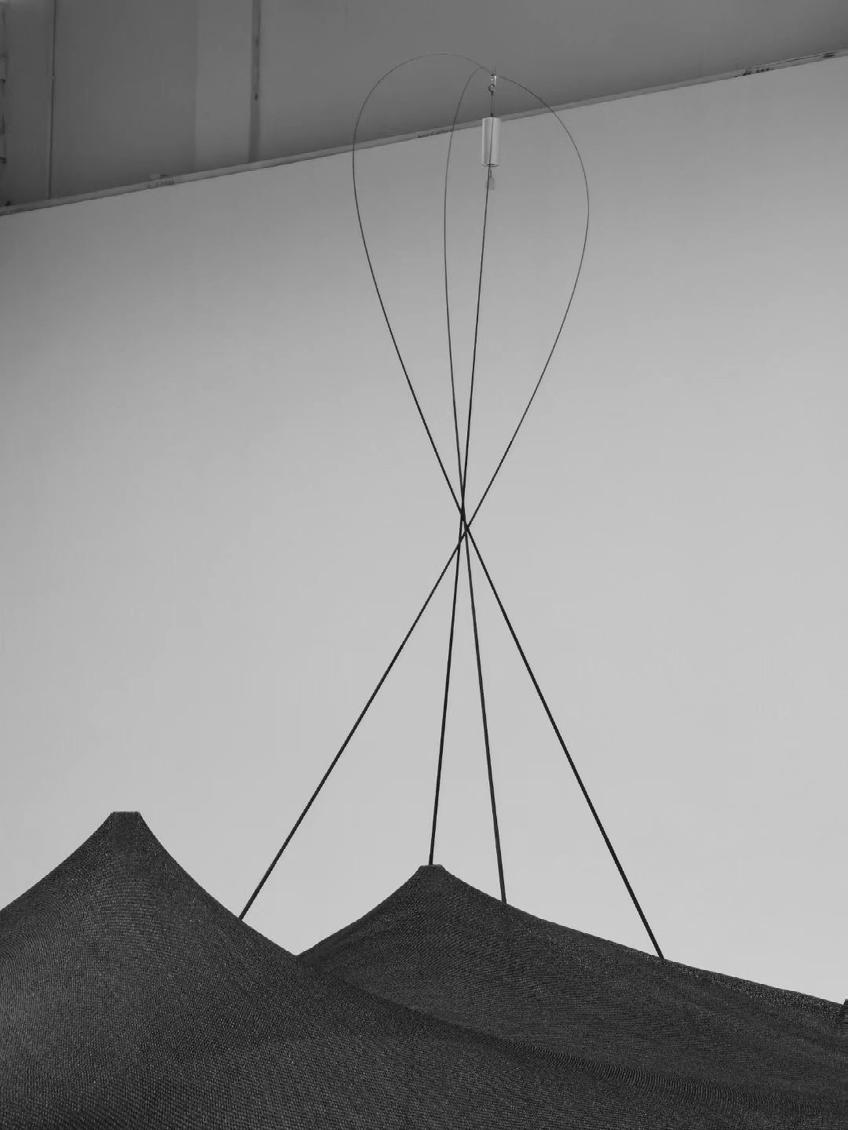
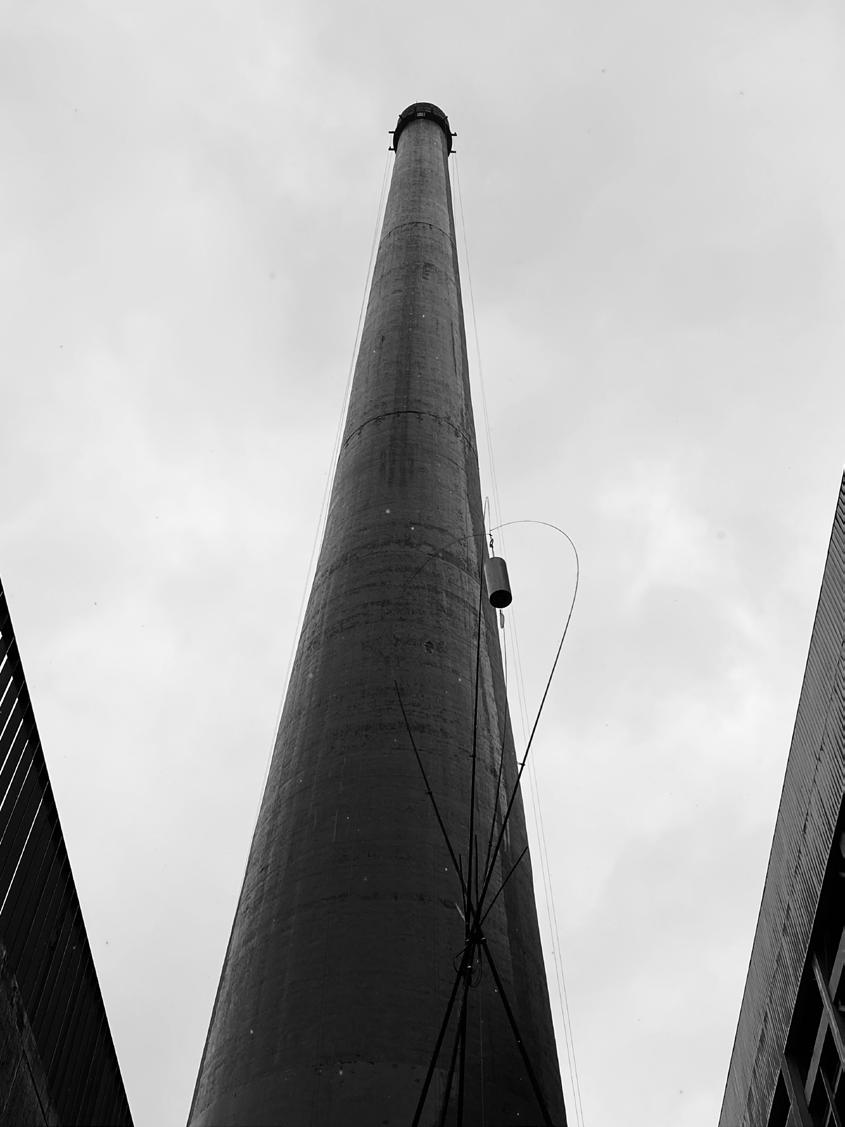
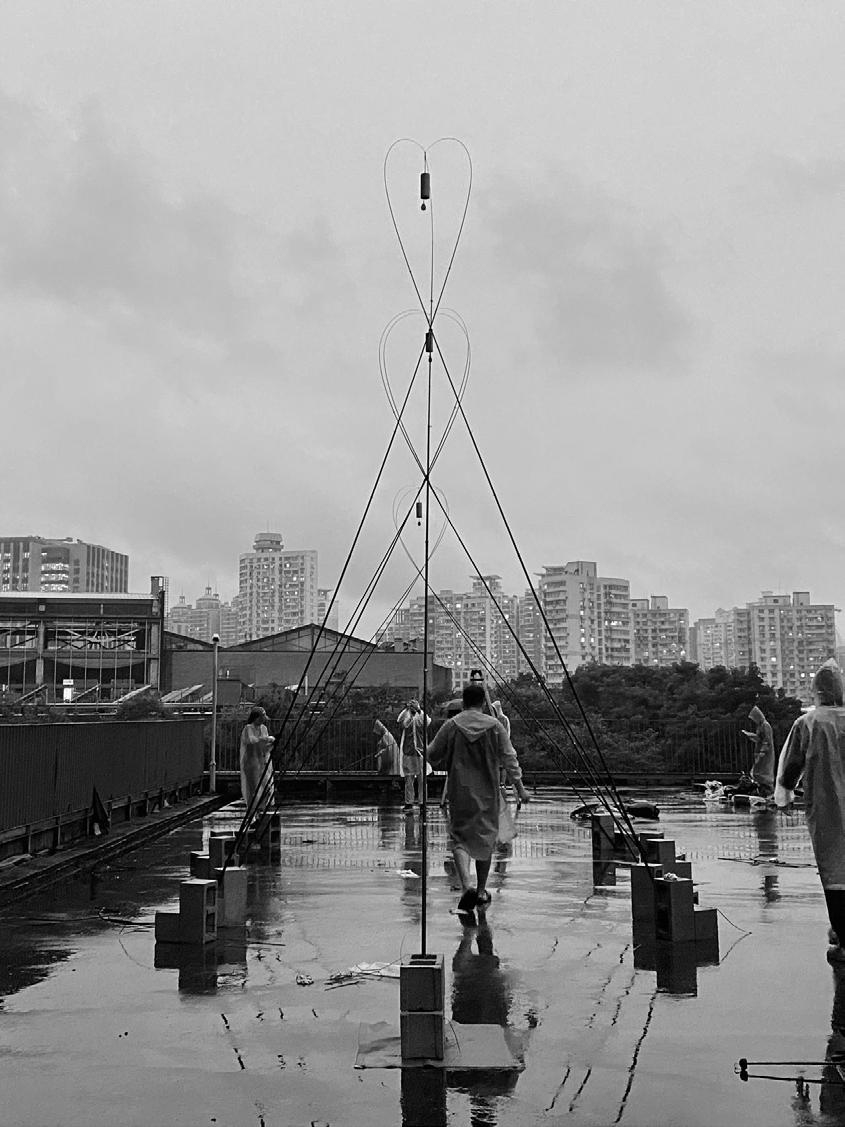

“are you gonna work out with me?”
2022.03-2022.05
Project type: Sophomore Studio Project Independent project
Huge neighborhoods (Mega-Plot) have been around since China embarked on socialist construction and the construction of the third line, and such neighborhoods were initially learned from the former Soviet Union. With the dramatic change in Chinese policy in the late 1970s, economic development and urbanization were pushed to new heights in China. The nature of the city also began to change, from a public continent of neighborhoods to a closed, emphatically private, isolated island.
This project hopes to provide a new way of coexistence for integrating huge neighborhoods into the city by liberating the ground space and allowing the public space that initially belonged to the city to return to the community without reservation. At the same time, in order to meet the housing needs of the young people in the site area, the project still takes subsidized housing as an entry point. It combines the design with three types of shared unit housing that meet different needs and the public support services necessary for community housing.
During the massing stage, the public space was explored and the private space was laid out in order to combine public and private, and to provide sufficient public areas and services, while ensuring the privacy of the residence.
The grid within the site remains highly respec�ul of the urban fabric of the surrounding site. Flows and sightlines that play an important role in transporta�on are extended from the exis�ng urban fabric around the site and collide with each other inside the site. These flows provide the original layers for the internal circula�on and block layout.
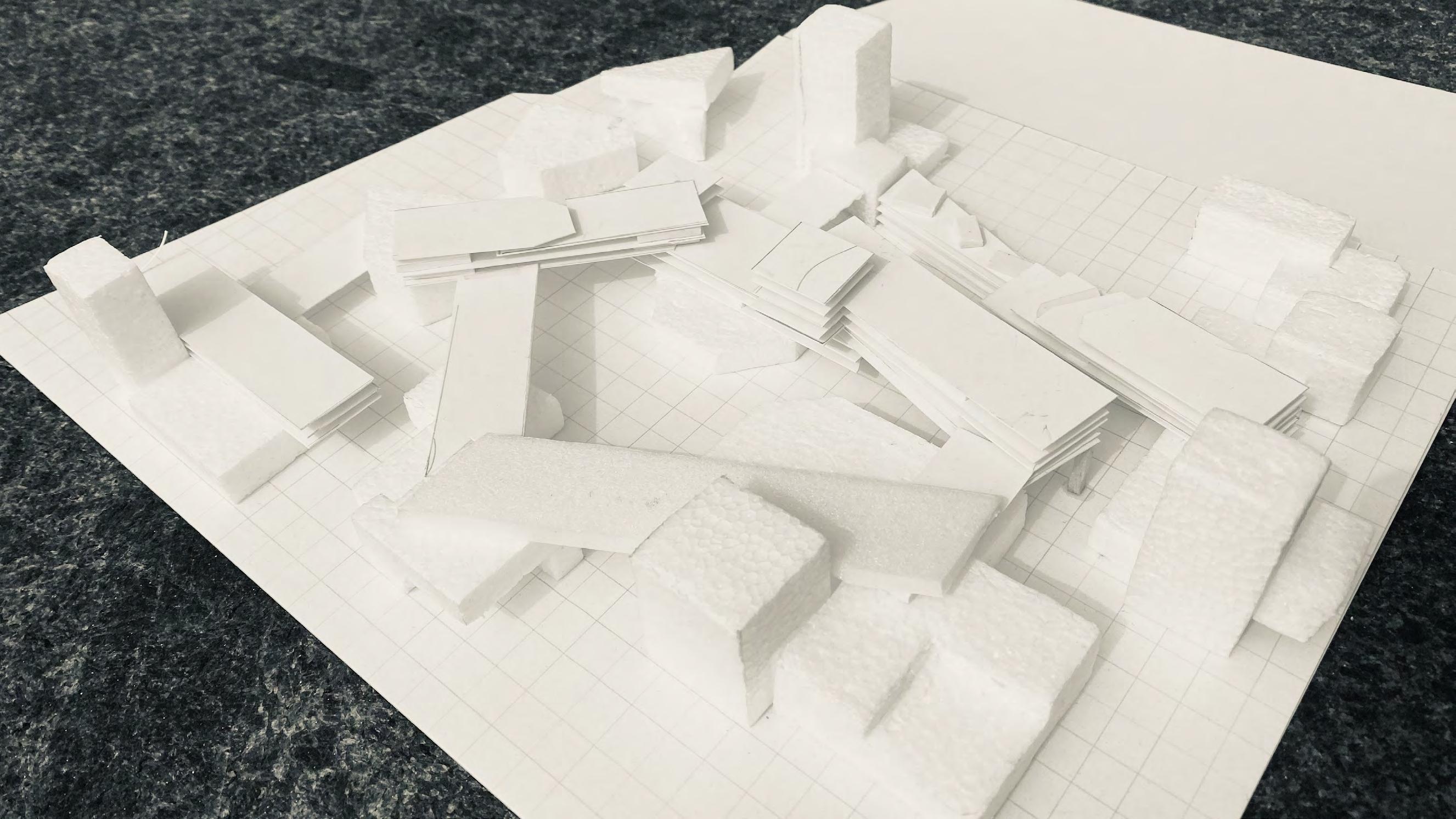
The three different house types are distributed in three different zones, which are interconnected by connec�ng corridors and provide common spaces for residents. On the one hand, it respects the different needs of the users and on the other hand, it provides opportuni�es for community exchange.
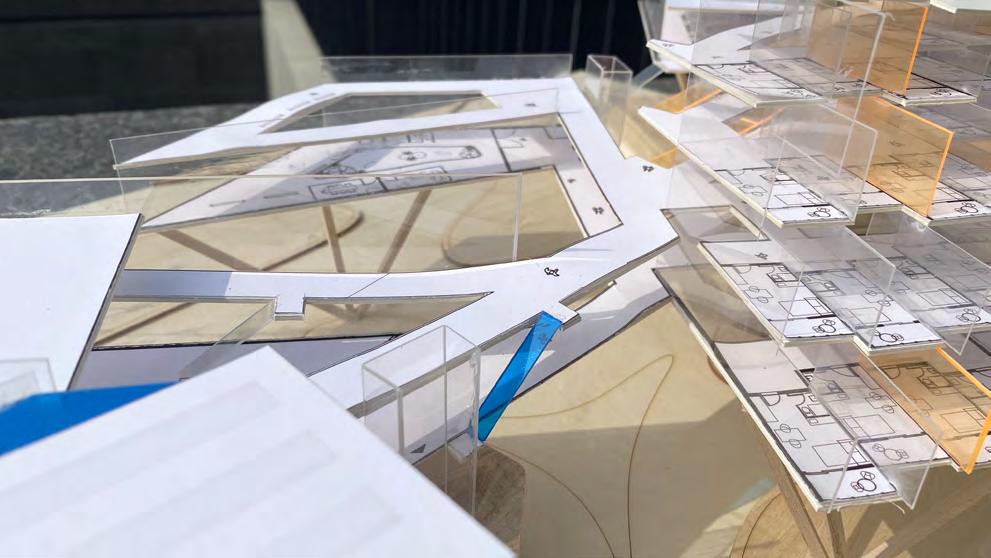
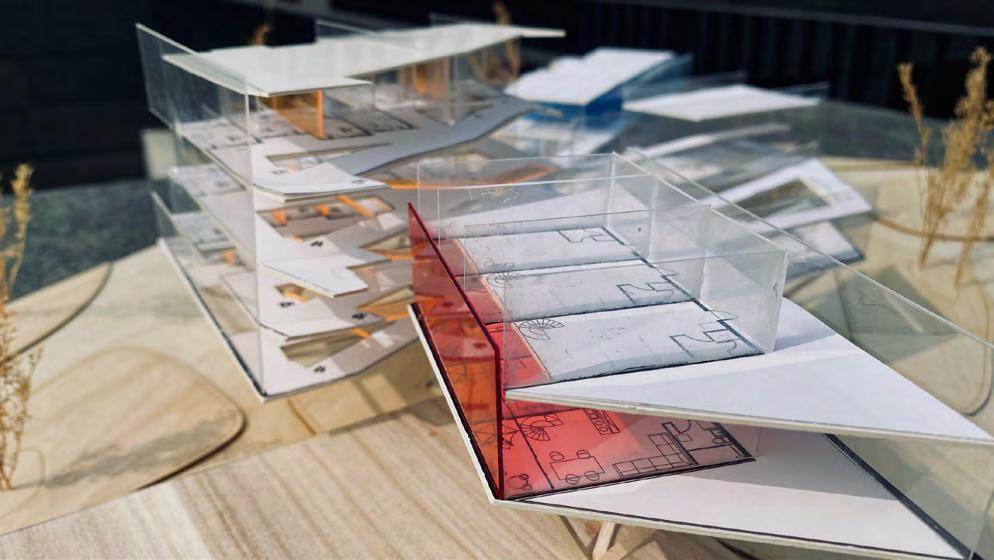
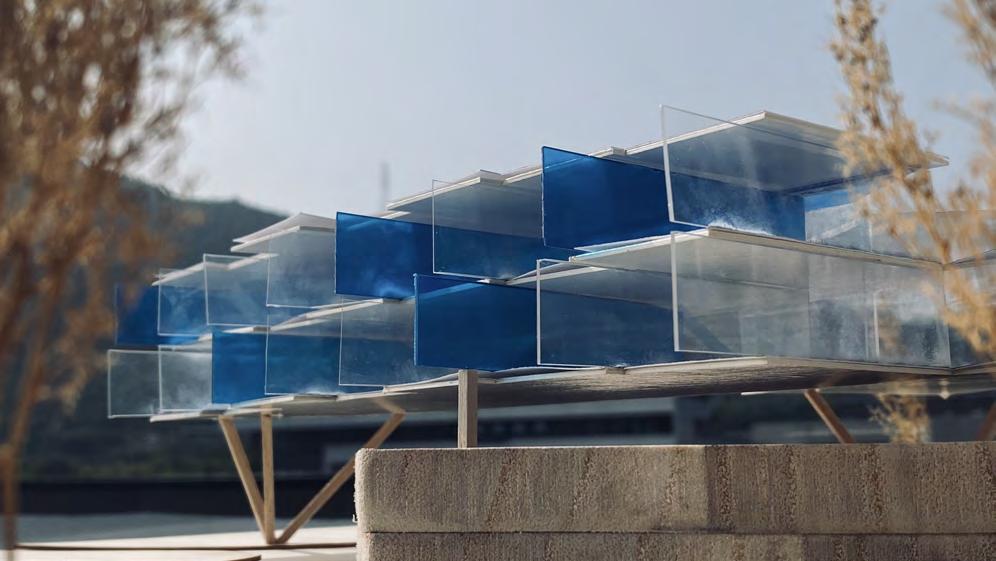
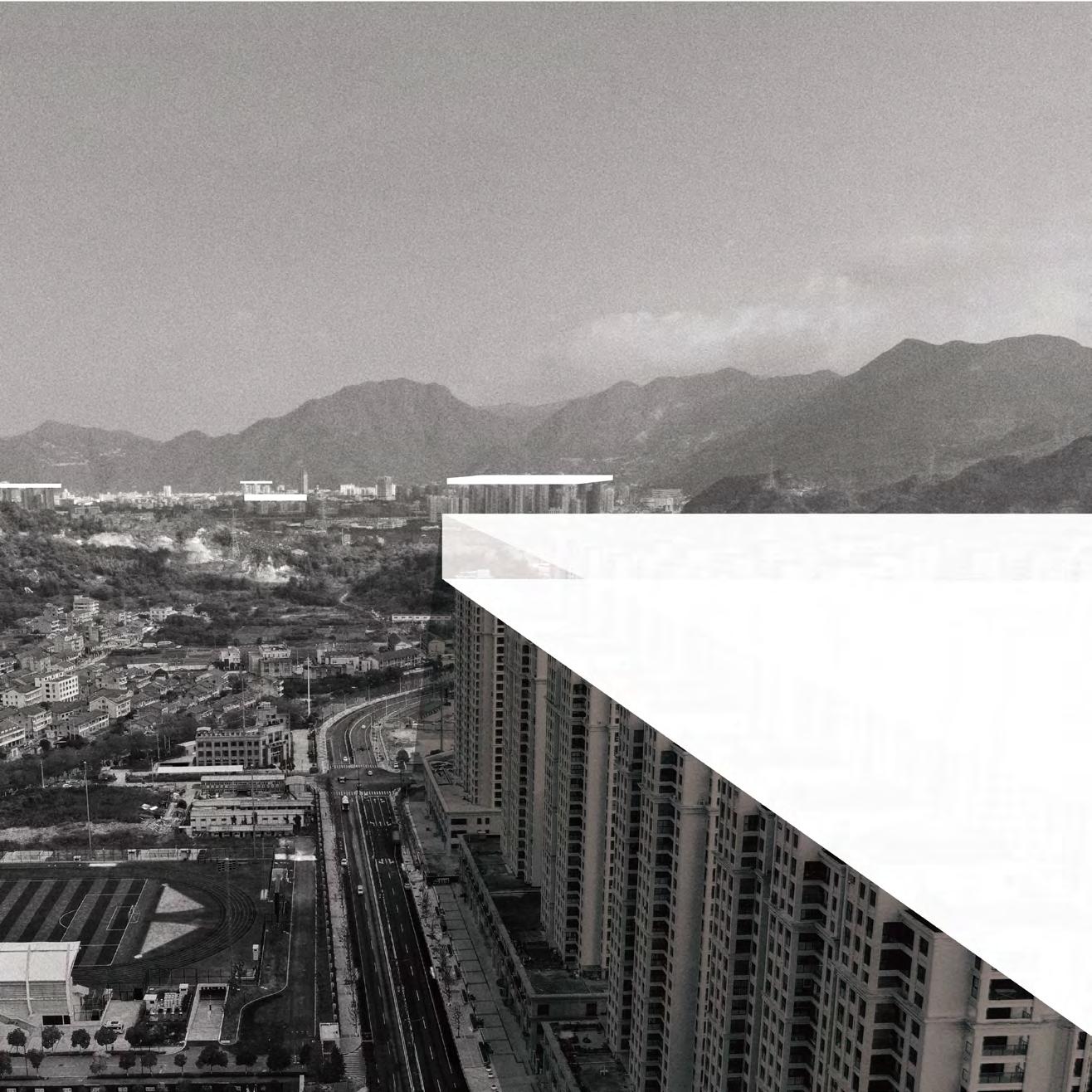
Non-Place STILL STANDING
2022.09-2022.12
Porject type: Junior Studio Project Independent project refined in 2023
“In an island, architecture is no longer the extrusion of property lines but a system of thresholds that defines spaces of use...... It entails a radical act of architectural imagination that questions the very premises that underpin and dominate our current forms of coexistence.”
‒ Pier Vittorio Aureli
Autonomy seems to be a natural opposition to capital. Due to the high pursuit of efficiency, against the background of capital balancing input and output, high-density residential buildings like replicas occupy a huge residential space in today's China. It seems that in order to erase the diversity of spaces and individuals, the government tacit connived to the obliteration of spatial individual diversity by capital under the goal of high management.
Based on the current situation of contemporary high-density housing in China, this project proposes a new way of transformation, attempting to break the limitations of high assimilation and single specific site, which is a reflection and exploration of coexistence



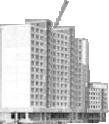
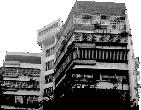
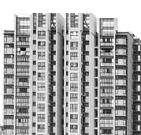
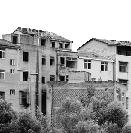
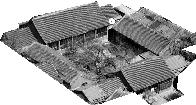
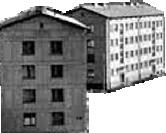

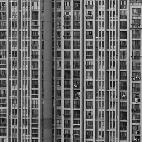
diagram: typological study of Chinese typical and local housing
Through a typological study of Chinese typical and local housing, it is observed that prior to 1980, both tradi�onal Chinese residen�al housing and socialist centralized housing featured collective shared spaces and coexistence areas at different levels, which accounted for a significant por�on of living spaces. However, the high-density housing that emerged following the commercializa�on of housing almost entirely eliminated these collective shared and coexistence spaces
Based on the research, I proposed two types of residen�al space unit design oriented to shared space and collec�ve housing. Through the centralized core of living room, dining room, kitchen, balcony and other spaces, the design arranges bedrooms around the core space, expec�ng to affect people's use and living mode through spa�al means.
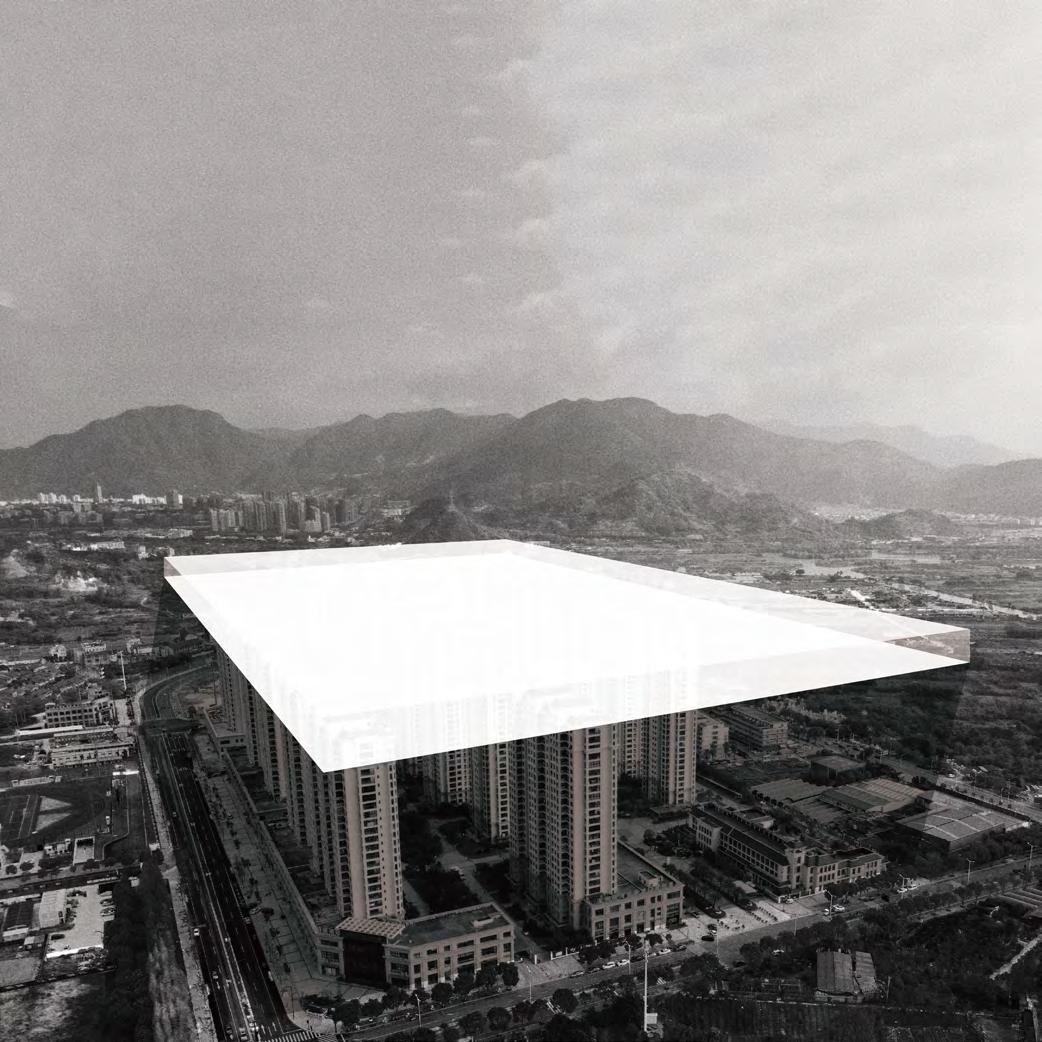
section 1:1000
The huge canopy that runs through the top of the development consists of two levels of public space and affordable housing. The public space is located on the top floor and consists of shared centralized spaces such as sports spaces, community centers, and auditoriums At the lower level, the affordable housing and single apartments reflect the need and concept of collective housing..
With the help of the structural characteris�cs, the spa�al traffic is directly connected with the original ver�cal traffic in the community. Large voids in the middle of canopy protects the original residen�al area from sunlight.
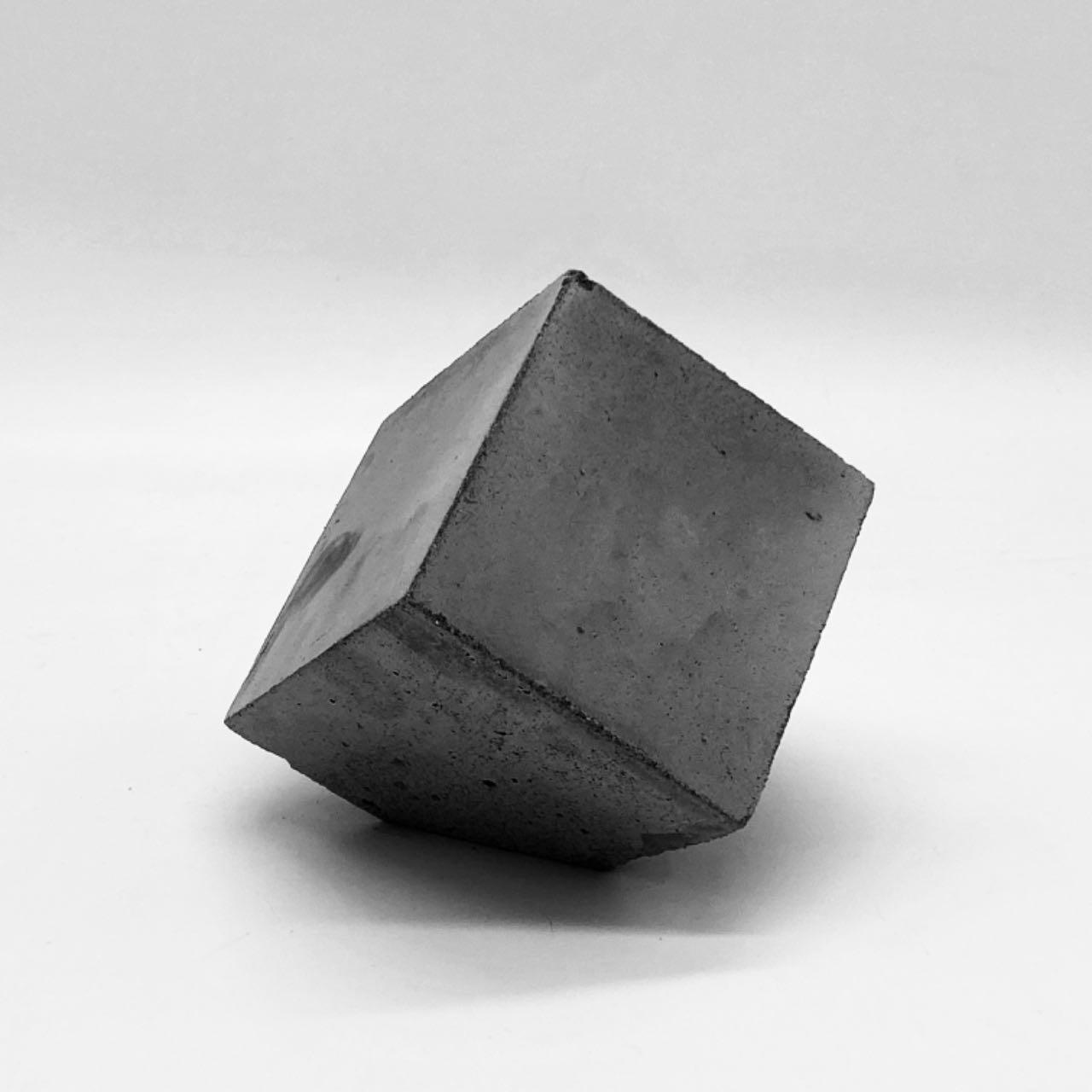
Other Works
FORMAL ANALYSIS, physical models, posters, artworks and drawings
Formal analysis is a small project I am proud of, starting from the most primitive origins of space and analyzing some apparent or plausible connections and conflicts between form and space ontology. This puts me in dialogue with every architect in a professional way. The physical model is the most intuitive way to feel the space, and the experience brought by trying it in different scales is utterly different from that on the drawings, which also includes different feelings compared with the electronic model. I got the valuable chance in Rice Architecture to expand the range of architecture, my groupmates and I design a wearable sculpture based on the emotions concept. 2020-2024
FORMAL ANALYSIS
2023.02 - 2023.04
Undergrad, ARCH 2403 Representation
loos uses “Raumplan” in opposition to the free plan as an alternative strategy for development modern spatial propositions Camouflaging Facade
Corbusier's free plan is at its best here as a result of seeing this as a successor - symmetry. Symmetrical Plan
Continuity will be viewed as continuity of the mass horizontally and continuity of the structure mass vertically, which is not essentially different. Continuous Mass
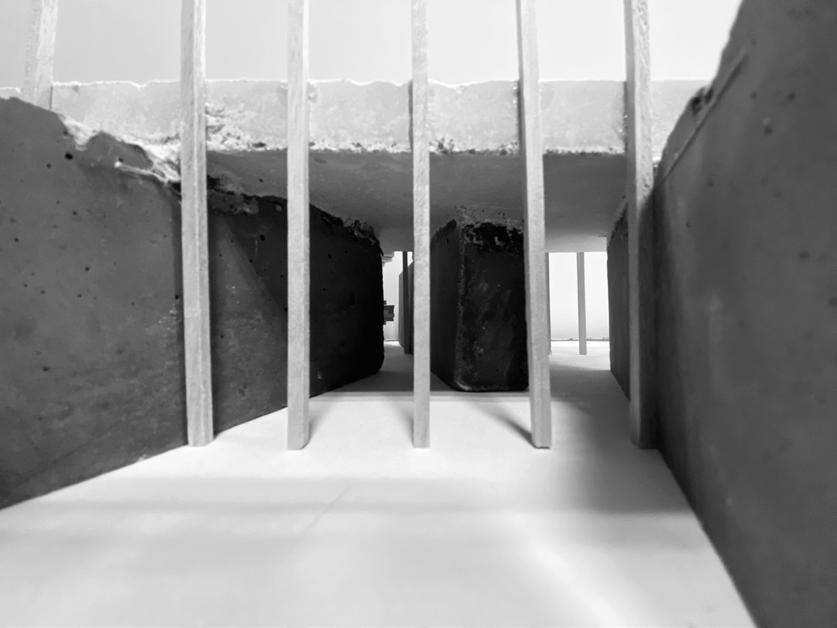
CONCRETE AND WOOD, physical model
Undergrad Freshman Studio: Construction and Architecture
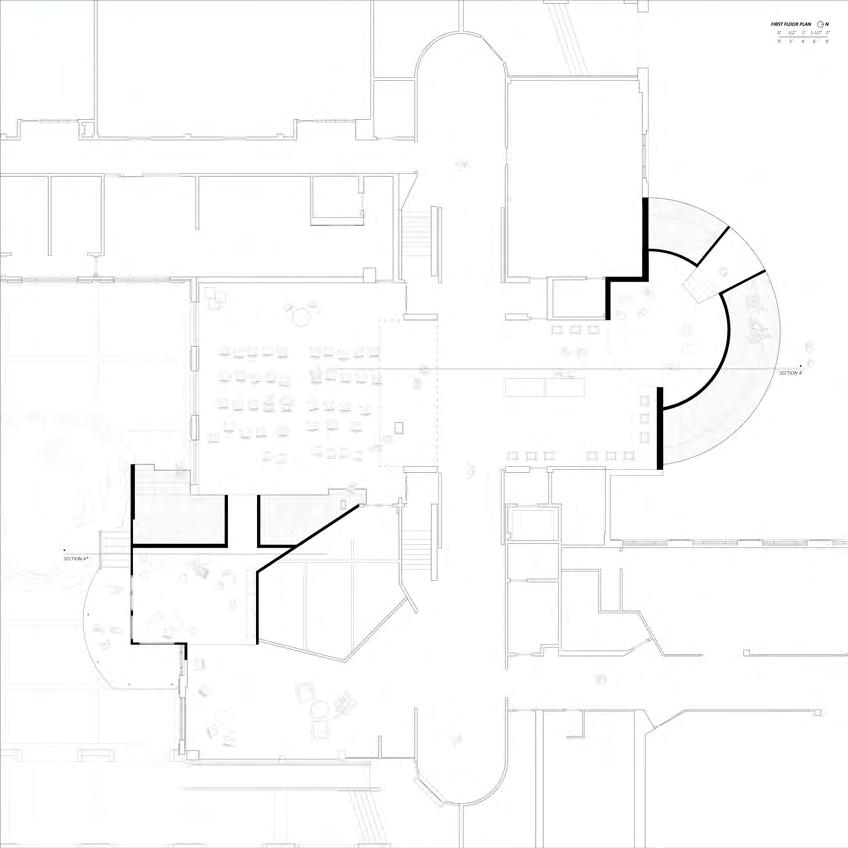
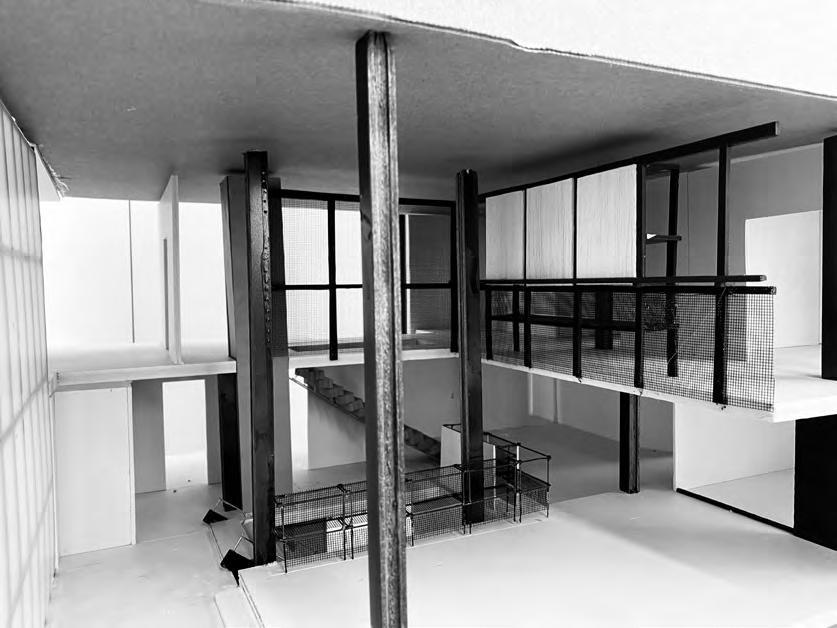
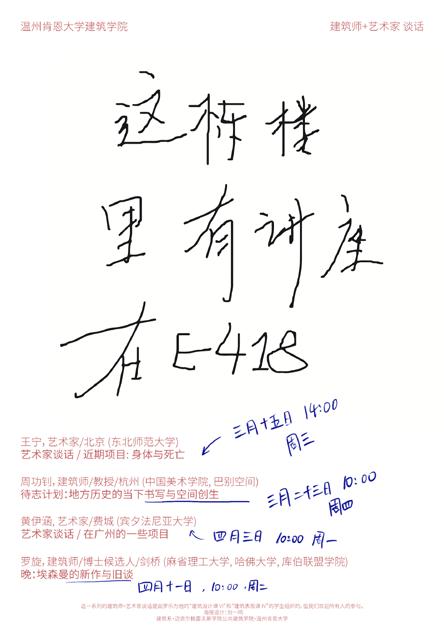
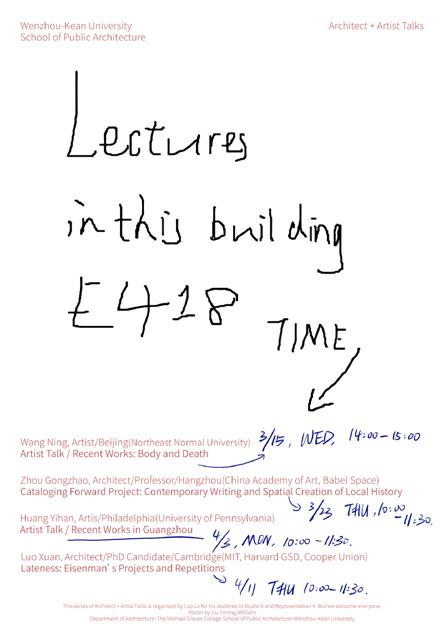
Undergrad Freshman Studio : Elements and Principles 2: Formal Theory
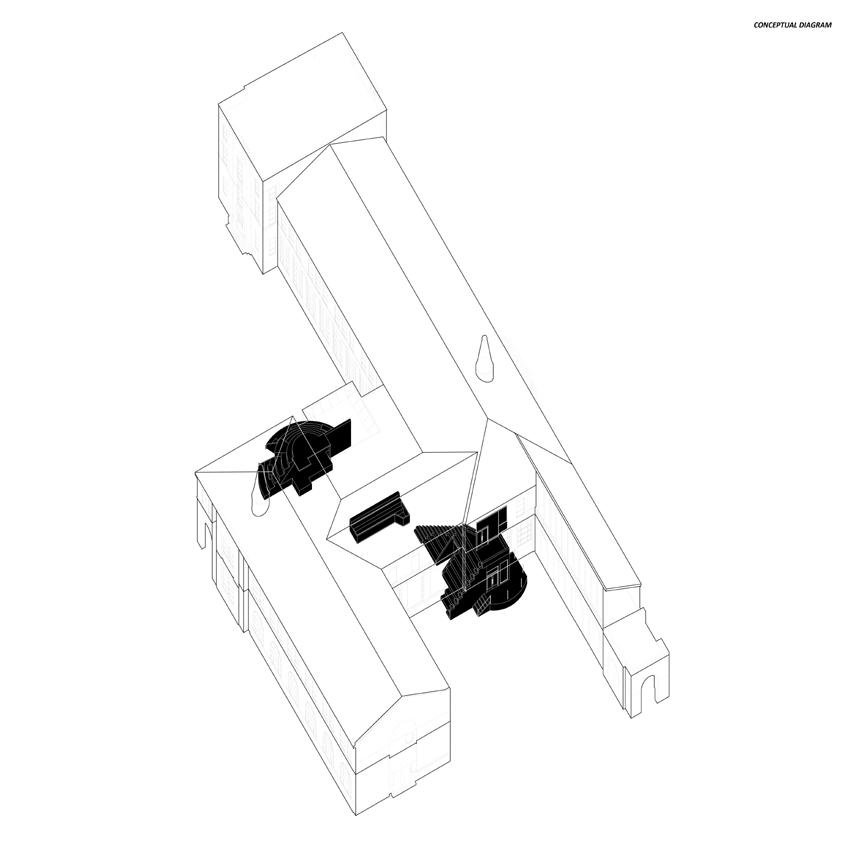
SCREEN PRINT, poster kean Univeristy Architecture, Architecture + Artist Talks
